
EUROPEAN HERITAGE AWARDS / EUROPA NOSTRA AWARDS


EUROPEAN HERITAGE AWARDS / EUROPA NOSTRA AWARDS
Editorial Team
Audrey Hogan (Coordinator)
Elena Bianchi
Joana Pinheiro
Graphic Design
Krzysztof Radoszek – Radoszek Arts
Printing Quantes
Printing Quantes
As part of Europa Nostra’s mission to safeguard our built and natural heritage, this publication has been produced using sustainably sourced paper and techniques.
ISSN 1876-309X
Front cover © David Frutos, 2023
Back cover © Juan Miguel Galera, 2023
Europa Nostra
The European Voice of Civil Society Committed to Cultural Heritage
International Secretariat
Lange Voorhout 15 NL - 2514 EA The Hague +31 (0) 70 302 40 50 info@europanostra.org
Brussels office
Rue de l’Industrie/Nijverheidsstraat 10 B - 1000 Bruxelles/Brussels +32 (0)2 894 74 99 bxl@europanostra.org
Copyright © 2024 Europa Nostra
All rights reserved. This information may be freely used and copied for non-commercial purposes, provided that the source is acknowledged.
This publication is produced with the support of the Creative Europe programme of the European Union. This publication reflects the views of many authors and neither the European Commission nor Europa Nostra can be held responsible for any use which may be made of the information contained therein.
For more information: europeanheritageawards.eu europanostra.org ec.europa.eu/programmes/creative-europe
Elena Bianchi Programme Manager European Heritage Awards eb@europanostra.org
Camilla Scopigni Programme Assistant European Heritage Awards cs@europanostra.org
The European Heritage Awards / Europa Nostra Awards were launched by the European Commission in 2002 and have been run by Europa Nostra ever since. The Awards highlight and disseminate heritage excellence and best practices, encourage the cross-border exchange of knowledge and connect heritage stakeholders to wider networks.
The Awards bring major benefits to the winners, such as greater (inter)national exposure, follow-on funding and increased visitor numbers. In addition, the Awards programme fosters a greater care for our shared heritage among Europe’s citizens. The Awards are therefore a key tool to promote the multiple values of cultural and natural heritage for Europe’s society, economy and environment.
The Awards honour up to 30 remarkable heritage achievements from all parts of Europe every year. The Grand Prix laureates, each with a monetary award, are chosen from among the laureates and one laureate receives the Public Choice Award, chosen in an online poll. Since 2002, independent expert juries have selected 644 award-winning projects from 34 countries. The Awards are funded by the Creative Europe programme of the European Union.
The Awards are presented to the winners at a major public event, hosted each year in a different European city during the annual European Cultural Heritage Summit. The European Heritage Awards Ceremony 2024 will take place in the Romanian Athenaeum, Bucharest on 7 October 2024, with the support of the European Commission. The Grand Prix and Public Choice Award laureates are not recorded in this publication and will instead be recorded on the official website of the Awards.

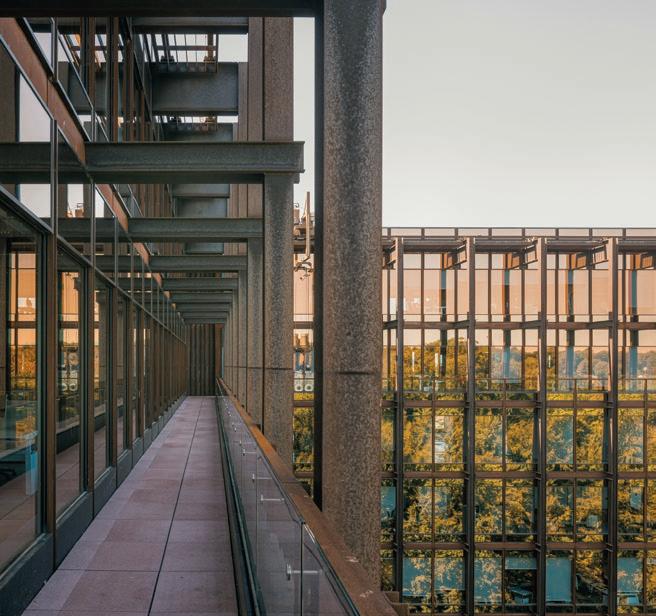


On behalf of the European Commission and Europa Nostra, it is with great pleasure that we present the distinguished recipients of the 2024 European Heritage Awards / Europa Nostra Awards.
These laureates exemplify the myriad ways in which cultural heritage benefits the European economy, society, health, well-being and sense of belonging. Culture and creativity enrich the social fabric of our continent and add colour and beauty to our daily lives. They also bolster Europe’s attractiveness around the world and position us as leaders in cultural innovation. In other words, cultural heritage is a precious resource that must be appropriately preserved so that we can reap its many benefits.
Behind each winning initiative is a team of people who have dedicated their professional careers to building their skills, often in niche areas of expertise. Among them are architects, artists, carpenters, conservators, curators, educators and engineers, to name just a few, who have collaborated to bring these fascinating projects to life. It is thanks to them that our shared cultural heritage is given the care that it deserves. This is why we must also work to ensure that the working conditions of cultural workers are commensurate with their great skill, securing the sector’s appeal for future talents.
Many of this year’s winners embody the principles of the New European Bauhaus initiative, spearheaded by the European Commission. This initiative brings the European Green Deal into our everyday lives and living spaces and underscores the integral role of cultural heritage in creating a circular economy and in helping the EU meet its goal of becoming climate-neutral by 2050.
This year’s awardees symbolise a collective commitment to a sustainable and inclusive future, showcasing the interconnectedness of science, technology, art and culture. They also highlight
the lessons that we can draw from our cultural heritage as we face contemporary climate challenges. For instance, the restoration of the Snow Wells in Spain reveals the ingenuity of past generations in finding solutions to problems presented by warmer climates, while the renovation of the modernist Royale Belge in Belgium provides a model for the sustainable use of the existing building stock that could be replicated across Europe.
Europe’s treasure of cultures and communities compels us to ensure inclusivity, allowing everyone to feel a sense of belonging. It is vital that those with fewer opportunities, including non-traditional audiences, find their place in heritage practices. It is heartening to see how many of this year’s winners have inclusivity at the core of their projects. For example, the Traditional Farm Buildings Scheme in Ireland helps farmers understand the great heritage value of their buildings, showing that heritage encompasses all kinds of architecture. Similarly, the restoration of the Ignacy Historic Mine in Poland , led by former miners, has given a completely new life to the surrounding area.
In 2024, these prestigious awards for heritage go to 26 outstanding winners from 18 countries across the continent. Four of this year’s awardees come from the UK – the most from any country this year. As the UK is not a participant in the EU’s Creative Europe programme, these winners will receive the Europa Nostra Awards. This reflects the outstanding level of heritage work in the UK as well as Europa Nostra’s commitment to recognising excellence in all countries of the Council of Europe.
We invite you to explore the stories of this year’s winners in the pages that follow, hoping that their achievements inspire and motivate you to embrace and advocate for our shared cultural heritage.
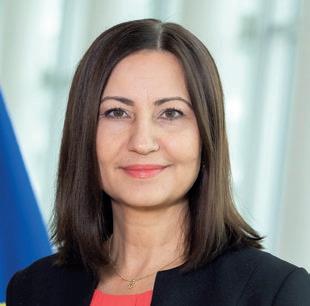
Iliana Ivanova European Commissioner for Innovation, Research, Culture, Education and Youth
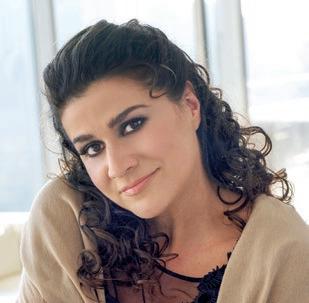
of Europa

In 2024, a total of 206 eligible applications were submitted to the European Heritage Awards / Europa Nostra Awards by organisations and individuals from 38 countries across Europe.
Conservation & Adaptive Reuse projects, including the restoration of buildings and their adaptation to new uses; new buildings in historic settings; urban and rural landscape rehabilitation; the conservation and interpretation of archaeological sites, and the care for collections of works of art and objects;
Research projects in the field of cultural heritage, including studies, digitisation projects and/ scientific publications which lead to tangible effects for the safeguard and enhancement of cultural heritage and/or to improve the access, enjoyment and understanding of heritage assets by communities;
Education, Training & Skills initiatives in the field of tangible and/or intangible cultural heritage that foster knowledge transfer, capacity-building and/or enhance traditional or new skills and crafts related to heritage;
This year, the European Heritage Awards / Europa Nostra Awards honoured 26 remarkable achievements from 18 countries.
All entries were evaluated by the Selection Committees (see page 60-61), one per category, who shortlisted a total of 60 entries. The shortlisted entries were then assessed in situ, whenever possible, by independent experts (see pages 63). The Heritage Awards Jury (see page 62), composed of the Chairs of each of the Selection Committees
Each year, the Awards are presented to outstanding achievements of European significance in the newly defined categories:
Citizens’ Engagement & Awareness-raising initiatives in the field of tangible and/or intangible cultural heritage which foster social cohesion, inclusion, multicultural dialogue and understanding, nurture a sense of place and belonging, celebrate diversity and multiple identities as well as stimulate citizens’ engagement, ownership and civic responsibility;
Heritage Champions, that is, influential and inspiring individuals or organisations whose exemplary action demonstrates an exceptional level of dedication, impact and civic engagement in the safeguarding and enhancement of cultural heritage.
and additional experts in the field, then chose the 26 winners from among the shortlisted projects. The Selection Committees and the Heritage Awards Jury are composed of experts from all over Europe.
Each laureate receives a certificate and a bronze wall plaque to fix in a visible location related to their initiative. The winners of the Grand Prix and of the Public Choice Award, chosen from among the winners, each receive a monetary award of €10,000.
Conservation & Adaptive Reuse projects
Research projects
Education, Training & Skills
Citizens’ Engagement & Awareness-raising
Heritage Champions
The Royale Belge building is a fine example of 1960s corporate architecture in Brussels, Belgium. After being completely abandoned in 2017, the building was in a state of extensive disrepair. In 2018, the city of Brussels granted a consortium of investors, Souverain 25, permission to renovate the building. In 2019, the building and its surrounding grounds were granted regional heritage protection. The city of Brussels and the new owners launched a design competition with a brief to reorganise the building and incorporate a mix of uses, including conference facilities, offices, and a hotel.
The winning design and adaptation project, now successfully completed, was a collaborative effort by the London-based Caruso St John Architects, the Antwerp-based Bovenbouw Architectuur, and the Brussels based DDS+ Architects and Metzger et Associés Architecture. The project financing is entirely private and the developer is a consortium of four funding partners – Cores Development , Urbicoon , Foresite and Ape
Designed by the renowned Belgian architect René Stapels in collaboration with the French architect Pierre Dufau, the building was completed in 1970 as the headquarters of the Royale Belge insurance company.
The façades, which were originally composed of large glass sections and Corten steel, were thermally substandard, at the end of their lifespan, and showed many leaks. The large glass façade was still single-glazed, and this gave rise to condensation problems. The roofs and terraces were aged and had significant waterproofing issues. The technical equipment was outdated and entirely based on a fuel oil energy supply.
The project to renovate the Royale Belge was fundamentally about doing as little as possible to the protected building, reusing and recycling materials wherever possible, making minimal alterations to allow it to fulfil its new purpose, and improving its energy performance whilst preserving the essence of its original design.
Externally, the original Corten steel façade framework has been retained with glazing that closely matches the original but with thermal performance that meets contemporary standards.

On the ground floor, large openings have been formed in the original marble-clad walls of the entrance hall. A generous passageway leads to a large circular hall that has been cut through the floors of the podium at the centre of the plan. These alterations bring light into the building, connect the various levels of the building and provide new shared spaces for the users.
“The project to restore the Royale Belge is of remarkable scale and quality, and showcases a commitment to sustainability that is visible throughout. By rescuing this 20th-century Modernist landmark from demolition, the restoration ensures the safeguarding of a vital piece of architectural heritage. Its multifunctional design approach, including the restoration of the surrounding garden space which is now accessible to the public, underscores its versatility and community engagement. Notably, the project’s minimalistic approach to both the building and new additions, which minimised the loss of original material, sets a positive precedent for similar architecture. This restoration shows how large-scale private investment can have a significant social impact”, the Awards’ Jury stated.
The rehabilitation of this Modernist building is of remarkable scale and quality and showcases a strong commitment to sustainability. It was built in 1970 as the headquarters of the Royale Belge insurance company and now incorporates a mix of uses.

The plan to restore the Schulenburg Mansion in Gera was established in 1996. The private owner of the house, a psychiatrist, was committed to returning the residence of the successful textile tycoon, orchid grower and art collector Paul Schulenburg to its original splendour. Everything, from its detailed exterior to the finely crafted interiors, wall coverings and furniture, has been restored.
The Schulenburg Mansion was built in 1914 by Henry van de Velde. The Belgian-Flemish neo-impressionist painter, architect and designer was the founder of the Grand-Ducal School of Arts and Crafts, the predecessor of the Bauhaus. In this function, he spent a large part of his career in Germany, especially in Thuringia. The entire home, including the wallpapers and furniture, the silverware and the park were designed by van de Velde.
By the time the current owner purchased the house, it had stood empty for close to a decade and was at risk of falling into disrepair. In collaboration with the owner, the design for the restoration of the building was undertaken by Kappler-Architekten. This included a survey of the existing building and art-historical research. It took a decade to fully restore the façade and interiors. The water and electricity lines were modernised and seamlessly incorporated.
An uncompromising commitment to the highest level of traditional craftsmanship was assured with the expertise of local craftsmen. They restored the stonework and parquet flooring and, in some rooms, wall coverings were re-woven based on small samples. The upholstery and metalwork were reconstructed based on old photographs.
It took two years to restore the original garden structure, an effort supported by the City of Gera. The large park impresses with 110-year-old yew hedges and linden trees, a magnificent rose lined pergola and plants chosen according to historical documents. A popular spot in the garden is the pavilion that allows visitors to enjoy the early sun of spring and an unobstructed view on the rear of the ensemble.
Today, the museum Haus Schulenburg hosts a large collection of art and books. A café is now located in the former garage and

a small Cabaret stage and auditorium as well as rooms for seminars and weddings are also now available.
“The restoration project of the Schulenburg House in Gera stands as a shining example for the conservation of 20th-century architecture. The long-term endeavour also showcases the pivotal role of engaged private owners in heritage conservation. By returning dignity to the house and remaining faithful to its original design, including the garden and furnishings, the project honours its architectural legacy. Ambitiously comprehensive, it meticulously considered materials and maintained coherence with the building’s aesthetic, spanning interiors, furniture, and the garden. Notably, the decision to avoid overcleaning ensures the preservation of its historical integrity. Furthermore, its positive impact on the surrounding community demonstrates the transformative potential of conservation in fostering cohesion”
This restoration project stands as a shining example for the conservation of 20th-century architecture. Ambitiously comprehensive, it meticulously considered materials and spans the interiors, furniture, and the garden.
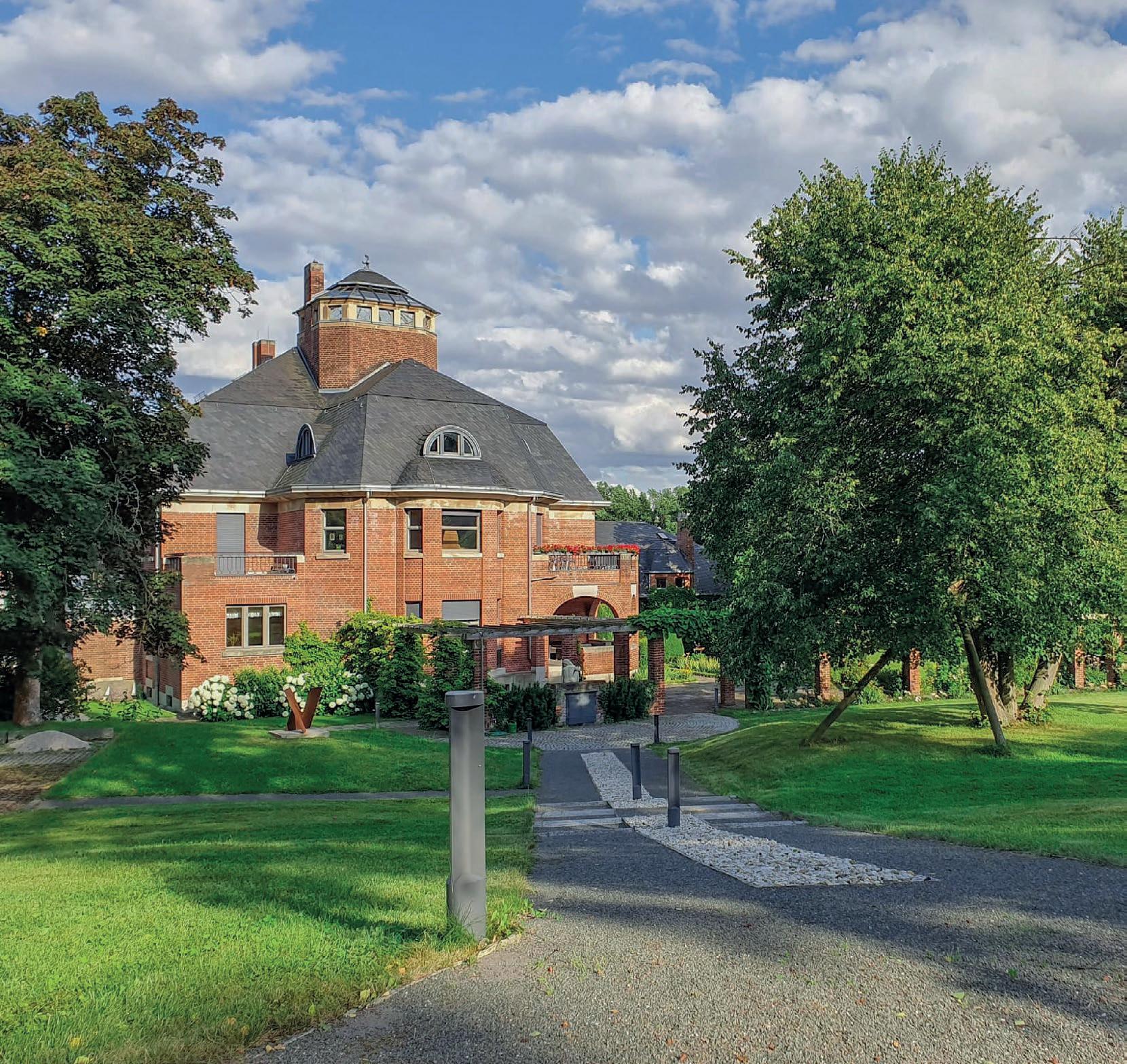
The Ignacy Historic Mine in Rybnik is a unique renovation project on the site of a former coal mine, one of the oldest in Poland, which was founded in 1792 and was in operation for over 200 years. Thanks to the joint efforts of the former miners, the City of Rybnik , the Polish state and EU funds, the complex has been saved and adapted to new functions as a cultural and recreational centre.
In 1999, facing the looming threat of neglect and decay, the miners acted to save the site. They formed an association with a clear mission: to persuade the mine’s management and local authorities of the importance of preserving this iconic facility. Their efforts bore fruit when, in 2005, the most valuable part of the mine was officially recognised on the Register of Cultural Property.
However, even these efforts could not halt the deterioration of the site. From 2006-2008, the site was finally closed when the Kosciuszko shaft was backfilled, the steam hoisting machines were shut down, and the hoisting ropes were removed. Responsibility for the heritage lay with the city of Rybnik, which took full ownership of most of the complex’s land.
Although the comprehensive renovation had been planned since 2014, renovation work began only in 2018. The restoration had three primary objectives. Firstly, the main complex and its unique equipment were preserved, transforming it into a beacon of European industrial heritage. The works carried out included a comprehensive restoration of the existing building fabric and works to update the sanitary and electrical wiring to adapt the site to new functions. A connecting building was constructed as an entrance to the complex with a reception and information desk. The most remarkable part was the renovation of the hundred-year-old steam engine, which is now working at full power.
The project also aimed to revitalise the area, once a symbol of economic hardship, into a space for community engagement and recreation. The former power plant building, repurposed as a meeting hall, now serves as a focal point for gatherings and events for the local community, including associations of retired miners. This development has had a significant social impact for the surrounding community.
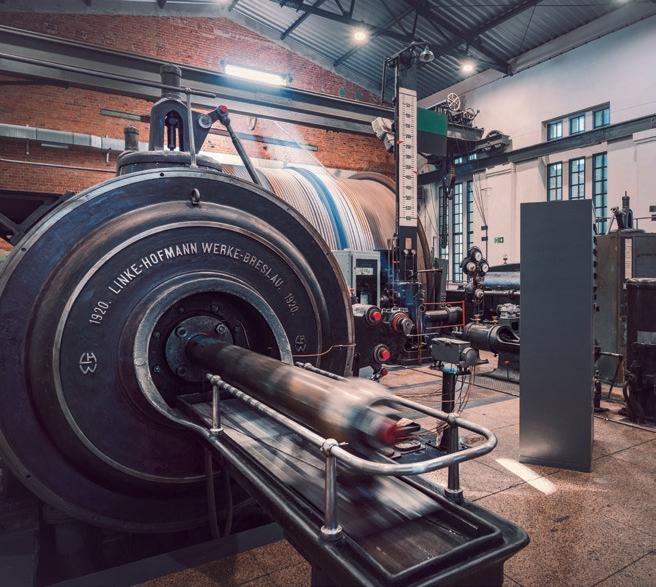
Finally, the project has opened the Ignacy Historic Mine to tourism. Visitors can now explore the interactive exhibition housed within the Kosciuszko shaft buildings, delving into the roots of the Industrial Revolution and the significance of inventions like the steam engine in shaping Europe’s global influence.
“The restoration project of the Ignacy Historic Mine in Rybnik exemplifies excellence in addressing common challenges for mining areas. The project showcases a holistic approach with meticulous attention to detail and a commitment to preserving mobile heritage, such as the steam engine. By investing in effective communication and community engagement, the project not only revitalised the physical landscape but also energised the local community, fostering social cohesion and even contributing to a reduction in crime rates. This bottom-up quality is what has ensured its status as a regional accelerator”, the Awards’ Jury stated.
The restoration of this historic mine serves as an inspiring example for other coal mines in Europe. Thanks to the joint efforts of the former miners and authorities, the complex has been saved and now serves as a centre for its community.
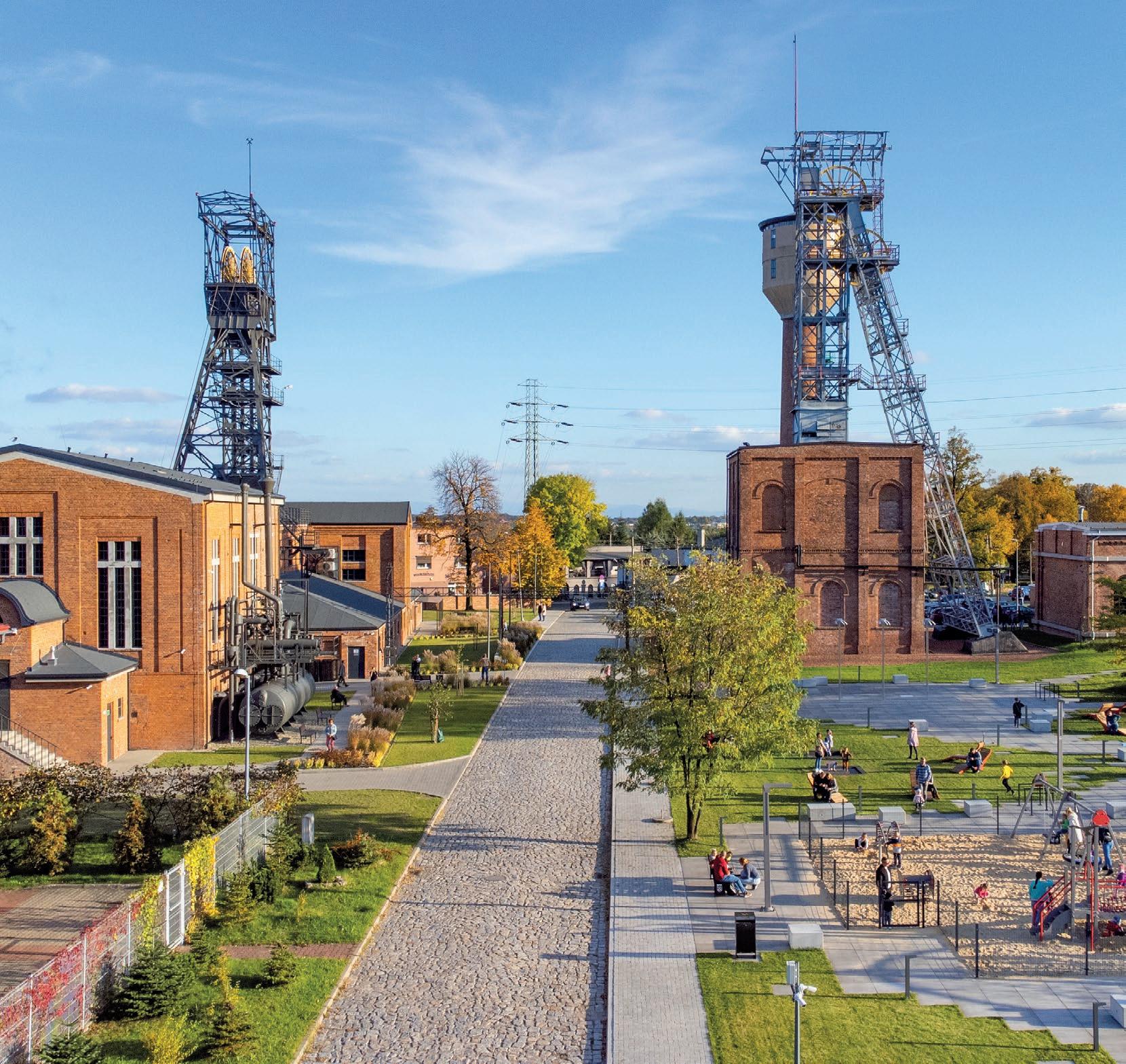
This project rescued and restored a cultural landmark that symbolises centuries of history and craftsmanship in the picturesque village of Alma Vii in Transylvania, Romania. The comprehensive restoration not only preserved the church’s architectural and historical integrity but also empowered the local community, fostered sustainable tourism development, and revitalised the village’s cultural heritage. The project was coordinated by Mihai Eminescu Trust and supported by the U.S. Ambassadors Fund for Cultural Preservation (AFCP) and EEA Grants.
Alma Vii, a traditional Transylvanian Saxon village, is known for its fortified church, a testament to centuries of history and craftsmanship. The church and its surroundings were in a state of disrepair, making preservation a pressing concern. The masonry, composed of both stones from the 14th century and handcrafted bricks from the 16th century, was non-homogeneous, resulting in structural weaknesses and visibly pronounced cracks, large fissures from past interventions, dislocations, and compromised joints. Plasters on the facades were deteriorated, especially on the northern side, leading to interior masonry issues. The wooden structure suffered from rot, humidity, and insect infestation.
The project’s integrated approach to conservation was strongly related to the implementation of a multifaceted strategy that combined high-quality restoration methods, sustainable heritage site valorisation, community engagement, strategic planning for sustainable development, and economic empowerment. The restoration works adheres to best practices, embracing minimal, reversible interventions using traditional local building materials and techniques. Skilled architects, engineers, and builders experienced in historic restoration were integral to the project. Restoration included repairing cracks in walls, re-binding stones and bricks, cleaning and pointing dislocated mortar with lime mortar, rebuilding deteriorated buttresses and ring wall segments, and repairing the damaged wooden roof structure. The church sacristy was also saved from collapse through the reconstruction of the vault.
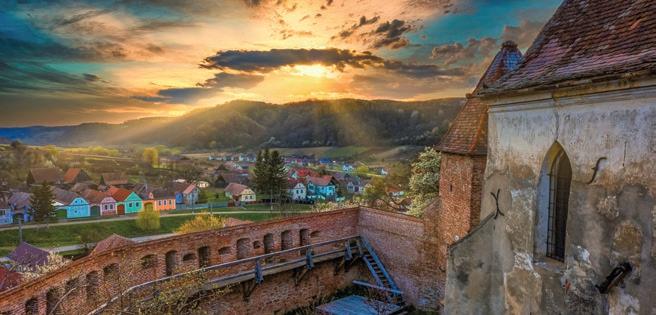
The project placed a significant emphasis on engaging the local community in heritage revitalisation through meetings, events, and educational workshops. These activities were designed to raise awareness about the value of cultural heritage, explore the protection and conservation of local heritage, and identify together with community members new functions for the church after completing restoration works. This was especially relevant as the church’s Saxon community had mostly left the village by the end of the 1990s.
The project not only breathed new life into a historical monument but also invigorated the community. It has become a catalyst for sustainable tourism, economic opportunities, and cultural exchange. The project’s holistic approach involved community engagement, education, and international collaboration.
“The conservation of the Saxon Church in Alma Vii is a strong example for fortified churches, and for religious heritage which no longer has a surrounding, original community to care for it. The meticulous yet minimal intervention ensured the use of compatible materials and solutions which were sensitive to the original structure. This is evident in how the original bricks and tiles were retained, and how the patina was conserved. This sustainable approach is also evident in the high-quality results, achieved with limited funding. The project has restored the cultural landscape of this small village, and included community engagement to the highest level, thus instilling a sense of responsibility for this heritage”, the Awards’ Jury said.
The comprehensive restoration of this cultural landmark not only preserved the church’s architectural and historical integrity but also empowered the local community and fostered sustainable tourism development.

St. Michael’s Church in Cluj-Napoca, Romania, embarked on an extensive restoration journey from 2016 to 2022. Beyond mere structural reinforcements and façade revivals, the project also encompassed the refurbishment of the interiors and modern enhancements. The project was made possible with financial support from the European Regional Development Funds , the Romanian Ministry for Development, Public Works and Administration , the Government of Hungary, Bethlen Gábor Fund Management, the State Secretariat for Cults, the City Hall of Cluj-Napoca , the Treasured Cluj Association , and many private donors.
Nestled in the city’s vibrant centre, St. Michael’s Church is a gem of European Gothic architecture. It has immense significance on local, regional, and national scales, and is recognised as a national landmark and an icon of Transylvania’s rich heritage. Its deep-rooted connections to royalty and pivotal historical figures highlight Cluj’s evolution over the centuries.
The passage of time and several natural disasters took a toll on its grandeur. This comprehensive project was initiated to halt this decline and reestablish St. Michael’s Church as a key tourist destination.
The restoration’s most innovative aspect is its structural reinforcement methods, utilising a steel truss structures to enhance earthquake safety. The use of locally-made new elements and the insertion of stainless steel reinforcements demonstrated a balance of tradition and modernity. Archaeological explorations during the renovation unveiled treasures like original architectural fragments and invaluable mediaeval art, enriching the church’s narrative.
A significant milestone was the opening of the church’s tower to the public. This new feature includes an exhibition area, providing visitors with insights into the church’s rich history and the restoration journey, and allowing for beautiful views of Cluj-Napoca.
The project engaged local youth and community members through educational programmes and guided tours, while workshops and events provided opportunities for hands-on learning about restoration techniques and the church’s historical significance.
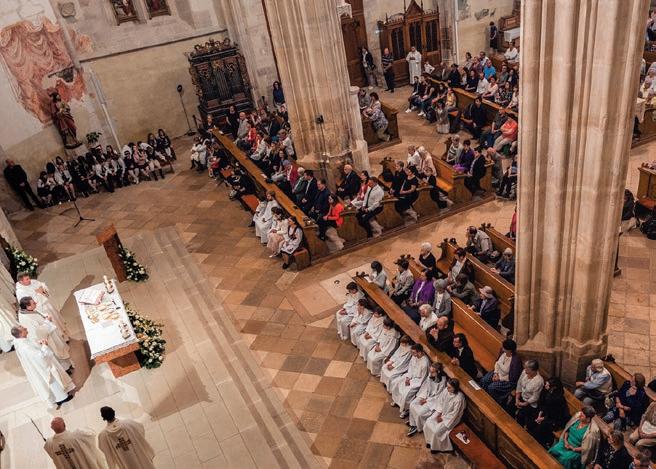
The COVID-19 lockdown imposed unexpected difficulties, ranging from logistical disruptions to labour shortages. The revitalised church therefore stands not only as a beacon of Cluj-Napoca’s rich heritage, but also as a testament to Europe’s commitment to preserving its illustrious history, even in the face of modern-day challenges like the COVID pandemic.
“The restoration of St. Michael’s Church in Cluj-Napoca embodies a remarkably sensitive structural intervention for a heritage site grappling with complex challenges, notably those posed by its location in an active earthquake zone. The solutions for restoring the rare Baroque roof are highly suitable, thanks to the cohesive, interdisciplinary team involved. This project serves as a prime example of EU-funded projects in the region, aligning well with Quality Principles for EU-funded Interventions with potential impact upon Cultural Heritage”, the Awards’ Jury commended.
“The commitment to disseminating the project’s findings and engaging with the community is laudable. This dedication, coupled with the church’s significance to the local community, is exemplified by their co-funding of the project”, the Jury added.
St. Michael’s Church is a gem of European Gothic architecture and embarked on an extensive restoration journey from 2016 to 2022. It encompassed structural reinforcement, the refurbishment of the interiors and modern enhancements.

Two of the most significant Snow Wells in Sierra Espuña have been restored as part of a wider effort to conserve their rich cultural legacy for future generations. The project was led by Ecoproyecta , and supported by the General Directorate of Cultural Heritage of the Region of Murcia , the General Directorate of Natural Environment and the Association of Sierra Espuña municipalities.
Dating back to the 16th century, these wells served as ice factories, storing winter snow for summer ice production. Despite falling into disrepair with the advent of modern refrigeration, the domes remained deeply significant to the local community and the landscape of Sierra Espuña, with many local families having ancestors who once worked there.
In 2019, the Master Plan for the Snow Wells of Sierra Espuña was finalised. This effort resulted in the official designation of the wells as an Asset of Cultural Interest (BIC), the highest recognition in Spain. This designation also includes preserving the surrounding areas where snow was collected (rasos), protecting visual landscapes with panoramic well views, and conserving related structures, like houses, a chapel, an ancient orchard, and a natural spring.
Among the urgent tasks outlined in the Master Plan was restoring Wells Number 11 and 13, selected due to their uniqueness, accessibility, and state of preservation. Well Number 11 featured a mixed construction dome (stone and brick), while Well Number 13 showcased a stone masonry dome constructed through layering. This resulted in distinct dome shapes, one resembling a hemisphere and the other a cone. Despite significant damage and the loss of their domes, these wells still had enough structural integrity and historical data for restoration.
The primary goal was the comprehensive restoration of these two wells, aiming to reinstate their original architectural forms. This included the use of traditional construction techniques and materials: stone and brick masonry, complemented by lime mortar.
The project has not restored the original function, which would now be impossible due to the effects of climate change, but rather offers visitors a chance to explore these unique structures and

learn about the historical ice trade. New access elements were introduced, including an observation deck and staircase in Well 11, as well as a walkway spanning the void in Well 13. These elements, crafted from wood, deliberately contrast with the original materials.
“The excellent restoration project of two Snow Wells in Sierra Espuña stems from a well-defined and scientific study on a very particular phenomenon in a remote place. It underscores the importance of vernacular heritage and the use of vernacular skills that are at risk of loss, all while perfectly integrating new designs which do not alter the interior of the structures”, the Awards’ Jury said.
“Significant efforts have been made to educate about the historic function of these wells while saving them from total disappearance. This is also important in the context of climate change, as it demonstrates solutions for challenges surrounding water access in this region”, the Jury emphasised.
Dating to the 16th century, these wells stored winter snow for summer ice production. Two of the most significant wells have been restored as part of a wider effort to conserve their rich cultural legacy for future generations.
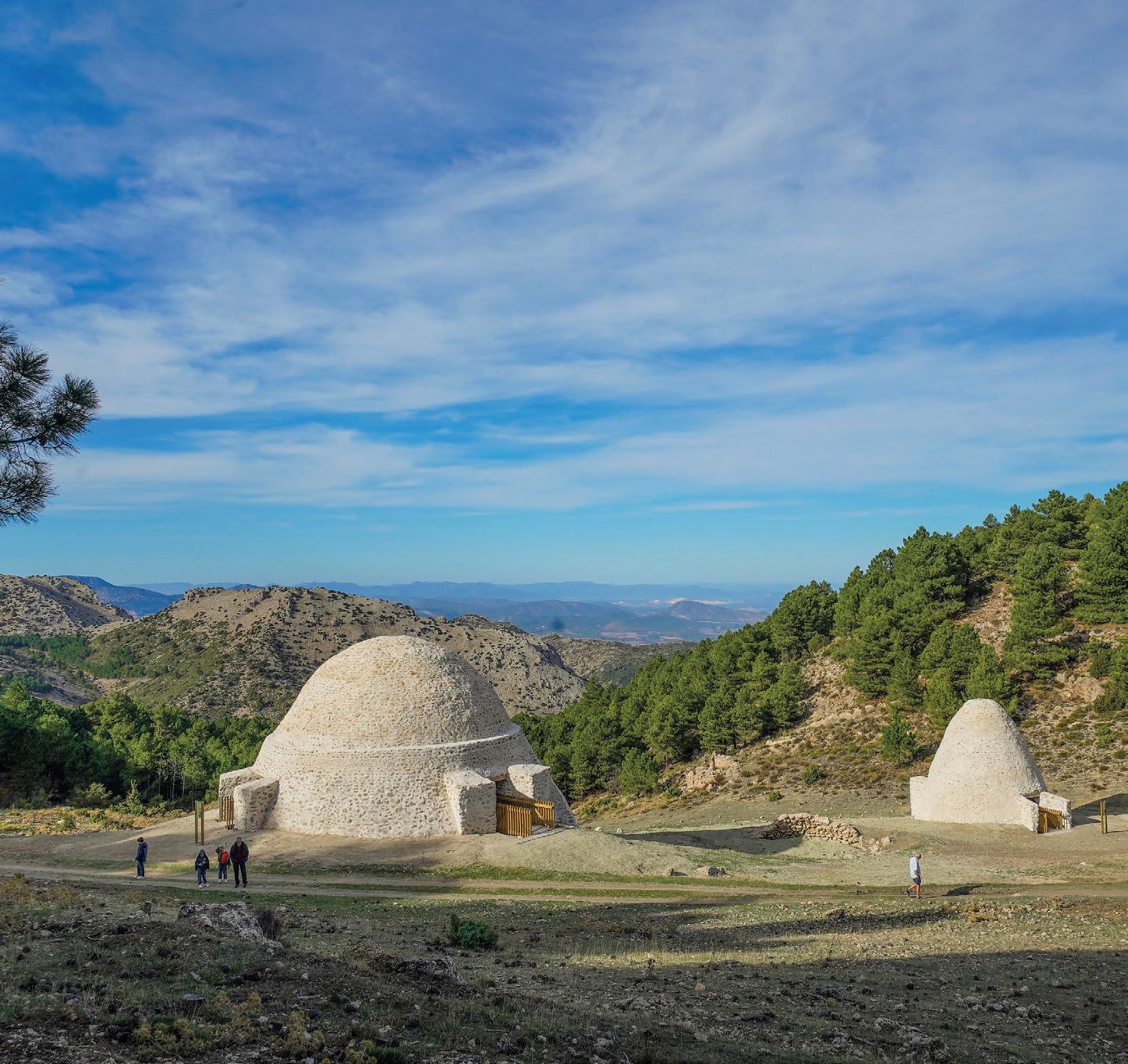
Contact: Pablo Carbonell, Ecoproyecta | pablo@ecoproyecta.es | www.ecoproyecta.es
This set of thirteen tapestries, which form an important part of an internationally significant collection of textiles, have hung in the Long Gallery at Hardwick Hall, Derbyshire, since the end of the 16th century. The Gideon Tapestries are a unique document of both Flemish tapestry production and English taste in the 16th century, and are the largest tapestry set to survive in Britain today. This 24year long conservation project, carried out by hand using traditional sewing and stitching techniques, exemplifies the National Trust ’s commitment to preservation. Generous support from individual and corporate funders, including The David Webster Charitable Trust and the Wolfson Foundation , enabled the realisation of this ambitious endeavour.
The conservation project of the Gideon Tapestries was initiated following the removal of one of the tapestries, which revealed the extensive vulnerabilities of each textile. Hardwick Hall was then galvanised into commissioning a condition report on the entire set.
A detailed specification was provided by Danielle Bosworth, one of the early pioneers in the art of tapestry conservation. The report specified a traditional stitched treatment, working through to a full linen scrim support, the proposed treatment of areas of loss, use of fabric in-fills and tapestry patches and suitable materials. Through these meticulous conservation efforts, the textiles have been stabilised, allowing for enhanced readability and understanding of their narrative.
The overarching result of this 24-year process of conservation is that these internationally significant tapestries have been safeguarded for another 100 years for generations to enjoy. The conservation has ensured that the tapestries can be read more coherently and that we can gain a better understanding of their significance and impact, both in the Elizabethan era and now. New techniques, for instance the washing system which was developed for cleaning very dirty but delicate tapestries, will inform future textile restoration projects. The sustainability of the project is also remarkable, in that the tapestries were regarded as a complete whole as opposed to individual objects. This meant

developing a set of working practices from the start, to ensure continuity throughout, even if the people involved changed.
The project has also had a huge impact educationally as the tapestries were used over the years for all interns at the textile studios as a teaching aide to gain experience in the delicate process of textile conservation.
Plans for future programming and outreach will enhance visitor experiences and promote wider cultural appreciation of the tapestries. This initiative’s European significance is evident in the collaboration with international partners, especially in Belgium.
“This 24-year endeavor exemplifies unparalleled dedication and collaboration, showcasing the depth of European heritage preservation. Through meticulous research the remarkable Gideon Tapestries have been safeguarded for future generations. The collaboration with Belgian textile experts underlines its European significance. The project’s longevity emphasises a commitment to excellence, while the innovative solutions that were developed highlight a resolve in overcoming challenges. This project is a testament to professionalism and the level of skill in conservation which are often unseen, but are very much worthy of celebration”, the Awards’ Jury commented.
A unique document of both Flemish tapestry production and English taste in the 16th century, this 24-year long project, carried out by hand using traditional sewing and stitching techniques, exemplifies the National Trust’s commitment to preservation.

Shrewsbury Flaxmill Maltings has been brought back to life as an adaptable workspace, leisure destination and social enterprise hub. The flagship heritage regeneration project for Historic England was funded from a variety of sources, including the National Lottery Heritage Fund , Historic England , Local Enterprise Partnership, and Shropshire Council . Funding for training and special projects was raised through crowdfunding, charitable trusts and individual philanthropy. Volunteers dedicated over 17,000 hours of their time to bring the story of this special place to life.
Shrewsbury Flaxmill Maltings (previously known as Ditherington Flax Mill) has been referred to as the ‘grandparent of skyscrapers’.
When built in 1797, it was the world’s first iron-framed building, a new technology developed to give better fire protection that paved the way for modern-day buildings.
For nearly a century, the site operated as a state-of-the-art steam-powered flax mill. It was later converted into a maltings and was then used as a temporary military barracks. Following the closure of the maltings in 1987, the future of the site became increasingly uncertain. Vandalism, poor maintenance and under investment had left the building fabric in a perilous condition and top of the ‘Heritage at Risk’ Register. In 2005, Historic England stepped in as ‘owner of last resort’ to reverse the decline and lead a partnership to find a new use for the site.
The project was designed and broken down into three single stage construction contracts. Historic England’s in-house project manager, the design team and main contractor were in constant liaison. Historic building risks were managed through extensive surveys, on site trials, and specialist input. An especially innovative aspect of this project was a new method of strengthening the masonry around the existing iron to enable it to act as an alternative load path in the event of failure.
Visitors can now visit the restored Jubilee Tower and a new exhibition space called The Mill, which tells the story of the site’s role in the Industrial Revolution and in world architecture. Flexible office space on the upper stories and the Kiln hosts commercial tenants.

The local community was engaged to help energise interest in the project by hosting events, art exhibitions, and Heritage Open Days. The project also delivered volunteering, training and local employment opportunities, ranging from construction skills to archival research. This engagement has resulted in an increasingly involved community, who fully appreciate the impact the restoration of this important national landmark site will have on the area’s regeneration.
“The restoration of Shrewsbury Flaxmill Maltings’ iconic building serves as a beacon for the conservation and adaptive reuse for industrial heritage sites in Europe. Through innovative project management, logistical complexities were navigated, and risks were mitigated effectively, ensuring its success”, the Awards’ Jury said.
“Beyond its architectural significance, the project had a profound community impact, fostering engagement and skill development while creating employment opportunities. By carefully preserving original features and repurposing the building’s original materials where possible, its historical integrity was honoured. It sets a pioneering example for future projects of its kind”, the Jury added.
Referred to as the ‘grandparent of skyscrapers’, the world’s first iron-framed building has been brought back to life as an adaptable workspace, leisure destination and social enterprise hub.

Westminster Hall in London is one of the greatest mediaeval halls in Europe. A Grade I listed building within a World Heritage Site, it is the oldest part of the Palace of Westminster and has been at the heart of British public and political life for almost 1,000 years.
In 2006, the UK Parliament decided to establish the Hall as the main visitors’ entrance to the Palace of Westminster and initial work was completed to repair the south steps and level an area of adjacent floor. Between 2010 and 2020, Donald Insall Associates and Alan Baxter Ltd worked closely with the UK Parliament in a threephase project. The work was funded directly by the UK Parliament .
The first phase comprised the repair of the masonry to the north wall, and the design and installation of the Queen’s Jubilee Window by Reyntiens Glass Studio. The second phase involved the cleaning and conservation of the remaining three walls and windows, the frieze and the niches for the mediaeval statues. A new ramp was installed to better link the Hall to the wider Palace of Westminster. Following this, the temporary ‘Ethics of Dust’ artwork by Jorge Otero-Pailos, showing the soil patterns on the latex used to clean the walls, was exhibited.
The final phase involved the conservation of the mediaeval hammer-beam roof and the extensive repair and re-cladding of the roof lantern, including rebuilding its fan vaulting and new provision for rainwater drainage. A fire detection system and new cabling to support a future lighting installation were also installed.
Innovative conservation methods included the use of nano-lime to consolidate mediaeval carvings, and latex poultices for stone cleaning. Nano-lime – an innovation stemming from an EU-funded project (STONECORE) – is a lime that has been transformed into tiny particles, allowing it to penetrate very small spaces, making it very useful for strengthening delicate or damaged surfaces. Design challenges included structural repairs to the mediaeval roof, re-detailing the lantern’s oak fan vaulting, and the discrete installation of services.
The conservation secured the future of this ancient building, enabling this landmark to safely serve as the host of Queen Eliza-
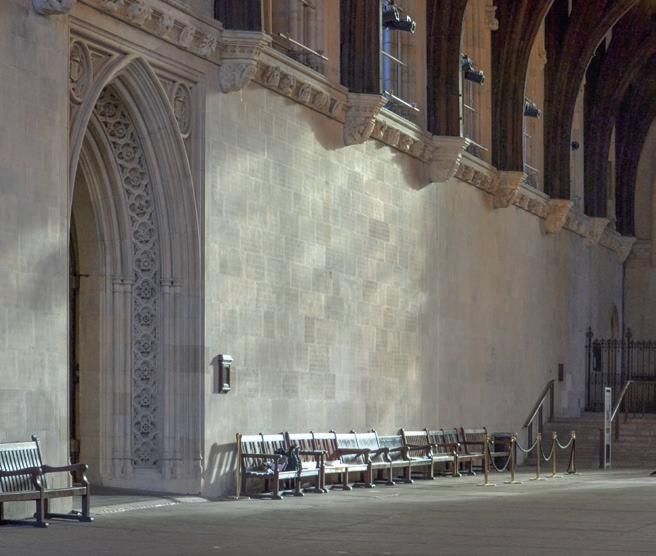
beth II’s lying in state. It will ultimately provide a hugely improved presentation of the space to visitors and Members as well as a more flexible facility for events.
“This project, characterised by its meticulous attention to detail and sensitivity, adheres to the highest standards in conservation. Its strong basis in documentation and rigorous research has ensured that the most appropriate and innovative solutions were established. The use of minimal scaffolding enabled public access and a safe work environment during the works. The use of nano-lime further exemplifies the project’s commitment to cutting-edge techniques”, the Jury said.
“New additions, such as the window, harmonise seamlessly with Westminster Hall’s original structure. Great care was spent maintaining the iconic building’s patina, resulting in a restoration that is imperceptible to the eye. With its high visibility, this project has the potential to significantly enhance public appreciation for heritage conservation”, the Jury added.
This 10-year long state-of-the-art project has conserved and enhanced this iconic mediaeval hall as a venue for State events, and established a principal visitors’ entrance to the Palace of Westminster.

The NewsEye project aims to improve access to the early European press from the period 1850-1950 for researchers, library users and the general public. Using 15 million pages digitised by the national libraries of Austria, Finland and France, NewsEye developed automatic tools for character recognition, analysis of newspaper structure (extraction of themes; identification of articles) and multilingual content processing (recognition of mentions of people, places and organisations; analysis of opinion; text mining) based on artificial intelligence. It offers a toolkit for large-scale analysis of digitised newspapers in different languages and from a variety of sources.
The consortium involved three national libraries ( National Library of Austria; National Library of Finland; National Library of France), four research groups in the humanities and social sciences, and four in computer science (University of La Rochelle, France; University of Helsinki, Finland; University of Innsbruck, Austria; University of Rostock, Germany; University Paul-Valéry Montpellier, France; University of Vienna, Austria). The majority of the project’s funding came from the European Union’s Horizon 2020 research and innovation programme.
The consortium developed new approaches to content analysis and exploration adapted to historical documents. The project has resulted in new knowledge in history, literature, gender studies and media analysis, on corpora in French, German, Finnish and Swedish, indicating that the advances made by the NewsEye project can benefit all disciplines in the social sciences and humanities, whatever the language of the sources studied.
The project has renewed the state of the art in document analysis and natural language processing and achieved numerous international benchmarks, making it possible to achieve a high level of understanding of textual content, despite imperfect digitisation and character recognition. This paves the way for numerous advances in the automatic analysis of old documents, an area in which the major AI large language models (such as ChatGPT) are not competitive. The project has also led to the creation of the NewsEye platform, a digital library adapted to historical newspa-
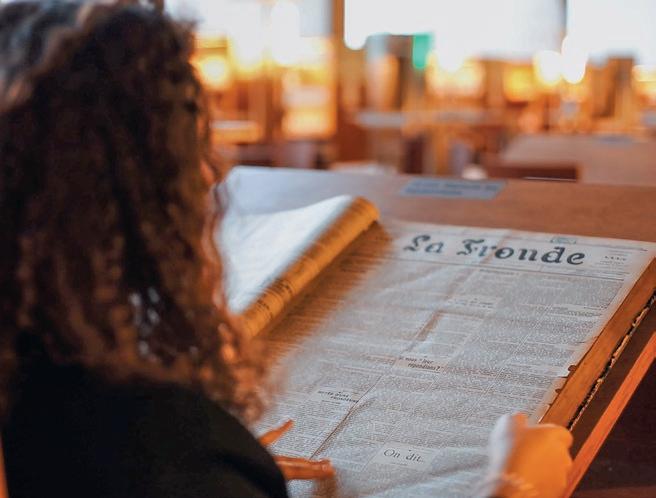
per collections, incorporating a dynamic text analysis toolbox and a personal research assistant.
As a research project, NewsEye has exceeded all its objectives in terms of scientific output, with 64 publications in conference proceedings and 13 in journals or book chapters by the end of the project, and many more subsequently.
“NewsEye is an excellent contribution to open science at the European level and beyond. It is a best practice for the digital humanities and should be considered a baseline for future research in this area. Its use of AI technology specifically responds to the needs of a very specific element of heritage, the Early European press. It is a strong example of how these innovative tools, which are not yet well implemented in the heritage sector, can be utilised for analysis and as a means through which new groups, including young people, can engage with the material. Its integration into an existing European platform and its extensive efforts in knowledge transfer and dissemination has ensured that NewsEye has been accepted by a community of users at a very large scale”, the Jury said.
Using 15 million pages of digitised newspapers, this innovative research project developed automatic tools based on artificial intelligence to make Europe’s newspaper accessible.

Since 2002, the Teryan Cultural Center has been committed to the study and preservation of Armenian culture, undertaking extensive research and hosting exhibitions about this culture. Since 2016, it has partnered with the Smithsonian Institute to take part in the ‘My Armenia’ project, training 55 Armenian artisans from the region of Nagorno-Karabakh and Armenia, and enabling them to share their crafts with local and international audiences. Some of the training programmes have also been supported by the Ministry of Education and Culture of the Republic of Armenia.
Following the armed conflict in Nagorno-Karabakh in September 2020, the Center swiftly transformed itself into a beacon of hope, offering humanitarian aid to Armenian refugees from Nagorno-Karabakh. In the face of the extreme adversity that these displaced people face, culture and heritage have been utilised to foster pride and create a sense of hope for the future.
Among the activities, participants have been trained in practical skills, such as sewing, to help them launch their own businesses in heritage crafts. A programme was also launched to support the participants in establishing traditional food businesses, selling food that is typical to the region of Nagorno-Karabakh. The training programme soon expanded into makeup artistry, hairstyling and ceramic art, thus providing a wide range of activities to aid displaced individuals in adapting to their new lives in Armenia.
Between 40 and 55 people take part each year, with the majority of participants being women. In addition, the activities are adapted for people with disabilities, ensuring the Teryan Cultural Center remains accessible and accommodating to a wide variety of participants. By providing a space where people can both learn and work, on a learning-by-doing basis, the centre addresses gaps in the Armenian job market and helps champion the unique heritage qualities of Armenians.
More recently, in autumn 2022, an additional group of over 100,000 Armenian people from Nagorno-Karabakh were forcibly displaced. To support them, the Teryan Cultural Center provides
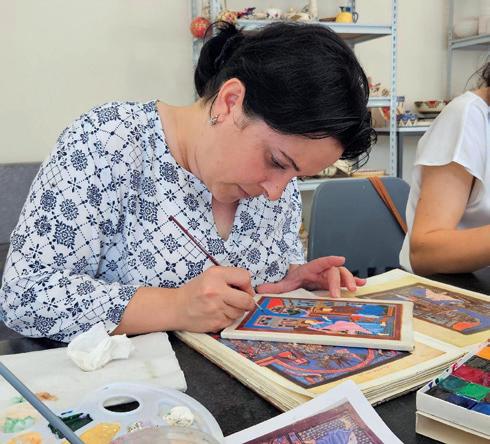
food, hygiene items and clothes, as well as psychological support, educational activities and help in searching for jobs.
The next goal of the Center is to empower current and past students to become teachers and mentors for new students once they have finished their courses, and to compensate them for their efforts.
“The Teryan Cultural Center is exemplary in the way that it preserves and revitalises Armenian cultural and heritage traditions that are at risk of being lost forever while using craft skills to create opportunities for (forcibly) displaced people who are building a new life for their families. Evolving organically in response to these pressing needs, the centre goes beyond the usual heritage frameworks and represents a continuous effort to support the Armenian community from the region of Nagorno Karabakh and its cultural heritage after its forced expulsion”, the Jury added.
This centre is committed to the study and preservation of Armenian culture providing a wide range of training activities in intangible heritage to aid displaced individuals in adapting to their new lives in Armenia.

Boulouki is a versatile collective of architects, engineers and heritage professionals dedicated to revitalising traditional craftsmanship for contemporary construction needs. Their vision is to promote a renewed building culture in Greece and worldwide, drawing from traditional knowledge and techniques.
Since its establishment in 2018 as a non-profit organisation, Boulouki operates on four pillars: education, research, practice and public dialogue. It is the only organisation in Greece that develops and implements professional apprenticeships, combining restoration projects with vocational training. They employ an itinerant approach, travelling around Greece, to conduct workshops that draw from, and respond to, the specific characteristics of every place.
Boulouki is currently developing the first centre for research and training on heritage building skills in the mountainous area of Epirus, at a former school building granted by the local public authorities.
Boulouki’s educational approach encompasses three primary formats: hands-on workshops tailored for students and practitioners in heritage-related fields, professional apprenticeships aimed at nurturing a new generation of craftspeople, and community participation initiatives. With a focus on interdisciplinarity, these programs unite masons, academics, students, professionals, and enthusiasts of all ages, fostering collaboration under the guidance of experienced craftspeople. Taking a holistic approach, Boulouki’s projects include guided walks, outdoor discussions, lectures, and seminars, as well as cultural mappings and celebrations that actively engage local communities and encourage intergenerational dialogue.
‘Under the Landscape’ is an exemplary project that began in 2021 and includes all the educational formats that Boulouki has developed so far. It concerns the participatory restoration of a cobblestone pathway and two underground rainwater cisterns which are part of the vernacular architecture and cultural landscape of the famous Santorini Archipelago. The project explores how small island communities may function as cores of social empowerment and creativity, through the participatory and collective care of their heritage.
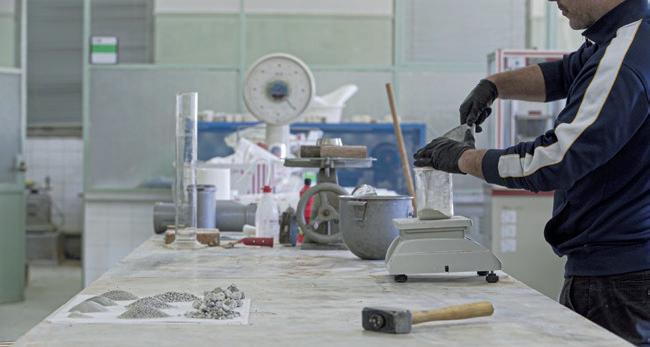
The project has provided the local community and the regional government with tangible proof of how cultural heritage is a valuable asset. It addressed challenges around conservation, heritage and building practices in the Greek context, namely the limited use of local building materials and techniques, the possibilities to re-introduce them; and the over-development and building sprawl of many Greek islands.
“Boulouki’s activities show a remarkable commitment to preserving the Cyclades’ unique landscape, that is under increasing pressure from tourism development and was recently listed as one of the 7 Most Endangered sites of 2024. Its exemplary approach encompasses research, documentation, community engagement, and training, and has a strong commitment to sustainability through the reuse of heritage. The collective has succeeded in training in drystone walling, a technique inscribed by UNESCO as Intangible Cultural Heritage of Humanity”, the Awards’ Jury commented.
“Boulouki’s activities have strong social, environmental and economic values. They promote social integration by bringing people of different ages and origins together, they champion the use of local materials and they support the preservation of the built and natural landscape. Boulouki sets a strong example for further restoration projects, highlighting the transformative power of heritage in promoting sustainable development”, the Jury added.
This collective is dedicated to revitalising traditional craftsmanship for contemporary construction needs, travelling around Greece to conduct training workshops that respond to the characteristics of each place.
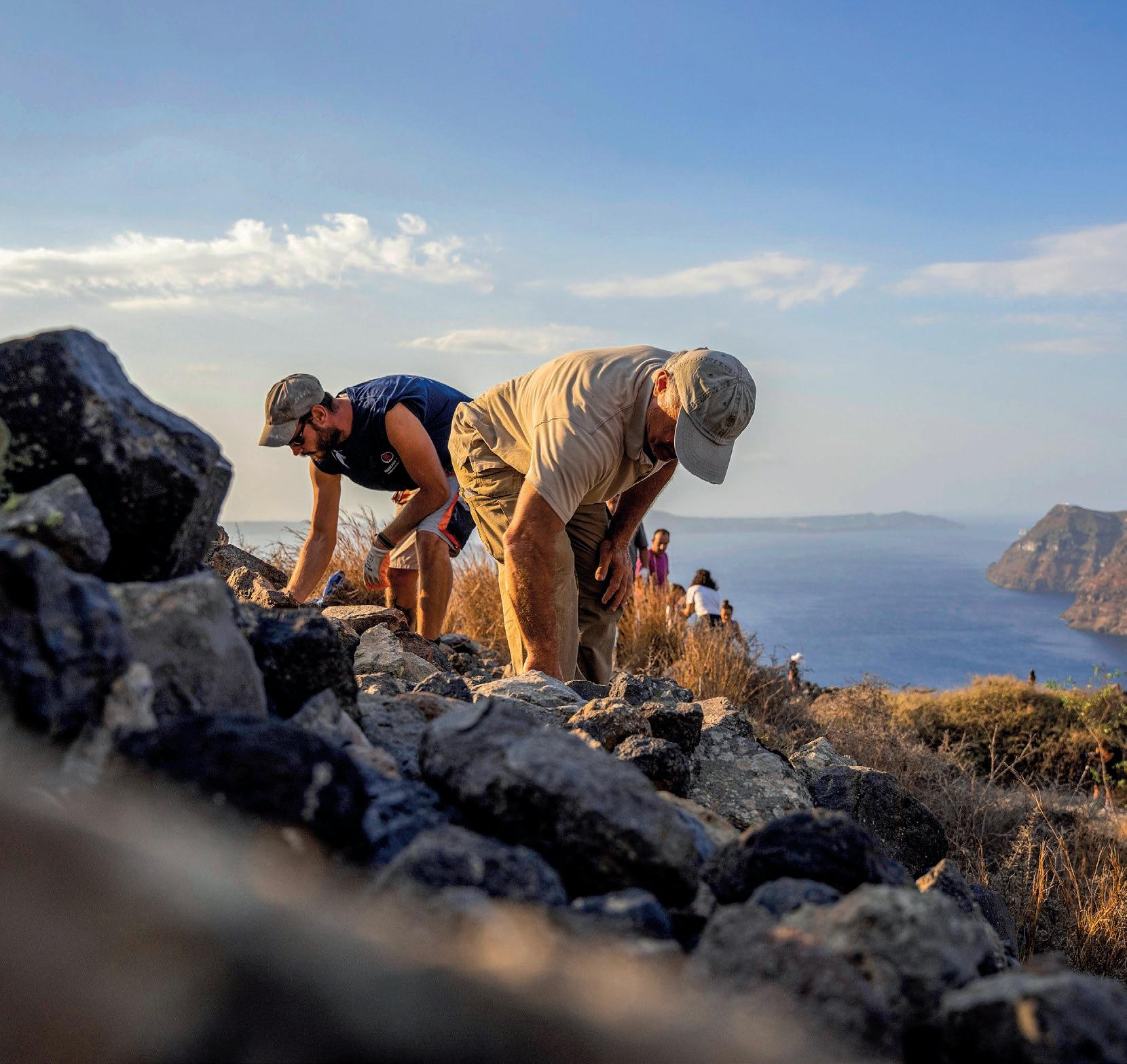
The Traditional Farm Buildings Scheme was established in 2008 by The Heritage Council in partnership with the Department of Agriculture, Food and Marine of the Government of Ireland . It was conceived in response to the rapid changes in agricultural practice and growing concern about the subsequent loss of traditional farm buildings, the associated traditional skills and the impact this would have on the character of the Irish rural landscape.
This nationwide competitive scheme is co-funded by the Irish government and the European Union under Ireland’s Rural Development Programme. It runs on an annual basis, with an average of 70-80 projects supported a year.
While such buildings often fall below the threshold of ‘special interest’ that justifies their protection under the law for architectural heritage, these simple vernacular structures are fundamental to the character of Ireland’s rural landscape. They are repositories of traditional building and craft skills as well as stores of memories and historic artefacts. Their link to the landscape and the natural environment is exemplified by their role as important habitats for numerous native species of plants and animals and as significant embodied carbon.
The principal objective of the scheme is to help farmers recognise the cultural value of these buildings and to ensure that they are conserved for agricultural use. Participants are supported in acquiring skills to enable them to carry out repairs to return the buildings to functional use on the farm. Skilled craftspeople are also engaged, and each participant must appoint a conservation supervisor who guides conservation ethos. Each participant commits to repairing in a way that will not adversely impact on wildlife populations. This requires the input of an ecologist who helps ensure a holistic outcome of the project.
Over 1,000 buildings have now been repaired since the beginning of the scheme. Of equal importance is the extraordinary success in changing attitudes surrounding vernacular heritage and traditional skills. On an informal level, the scheme facilitates the transmission of skills from generation to generation, with the whole family often
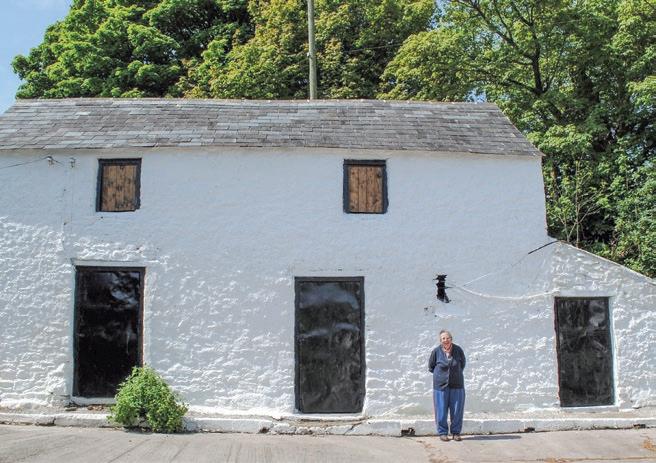
getting involved in conservation works. It has been observed that it is often the younger generation who feel most strongly about the traditional buildings on the family farm being conserved.
“The Traditional Farm Buildings Scheme is commendable for its wide-reaching, high-impact and holistic approach, which demonstrates integrated policies at work. Its emphasis on peer-to-peer learning has brought together diverse stakeholders, including owners, local community, conservationists, craftspeople and ecologists, creating meaningful connections and mutual understanding”, the Awards’ Jury said.
“The scheme addresses the underappreciated value of vernacular farm buildings, heritage assets that are often overlooked in Ireland and beyond and encourages a sense of guardianship among the owners. It acknowledges farm buildings’ pivotal role in shaping the cultural landscape and actively contributes to the continuation of traditional crafts in contemporary society. By championing the reuse of humble rural structures to meet modern needs and focusing on environmental and biodiversity considerations, the Traditional Farm Buildings Scheme sets a very positive example of how communities can respond to climate change”, the Jury added.
This nationwide scheme help farmers recognise the cultural value of traditional farm buildings. Participants are supported in acquiring skills to repair and return the buildings to functional use on the farm.
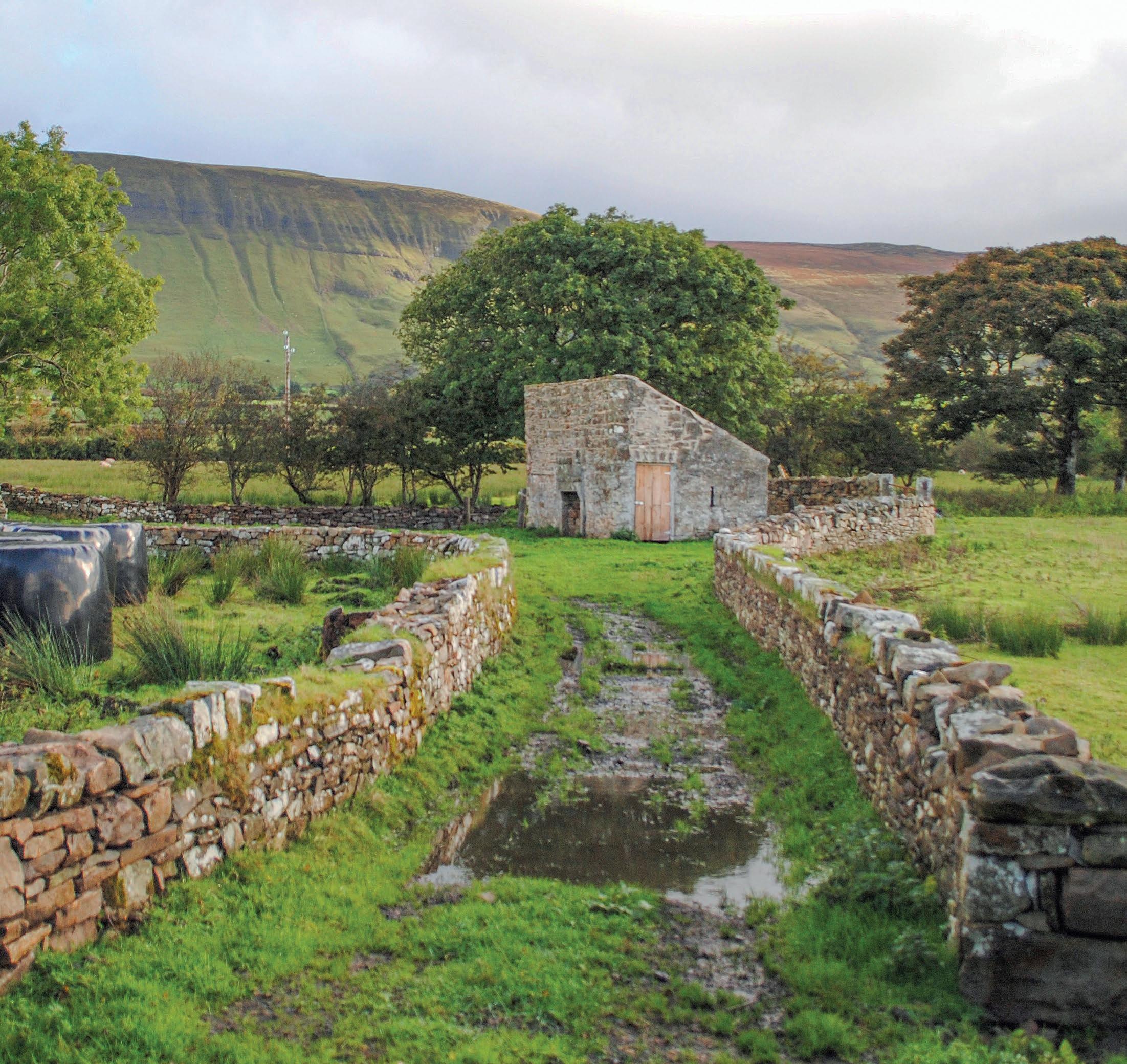
The Serfenta Crafts Revitalisation Model is a revolutionary approach to the education, training and transmission of crafts in Poland. Designed and implemented by the Serfenta Association, it was created over a period of 15 years, with the craft of basketry at its core.
The craft is at risk of discontinuation due to the relatively older average age of its masters and the low market value of craft products. Serfenta proposes an approach to address, and provide solutions to this problem on a wide scale and to make craft available for all.
From 2008 to 2016, the Serfenta team conducted ethnographic interviews with traditional basket makers in Poland, Norway, Ukraine, Germany, Iceland and the Czech Republic, to gather knowledge connected to basketry techniques and the natural materials they use. Following this research, the project team concluded that though there is an interest in crafts among younger generations, there are many barriers as well as misconceptions around craft practice that impede them from taking part. The manner of transmitting these intangible heritage skills would therefore need to be refreshed to ensure its continuation.
In cooperation with craftsmen, designers, and people of every age and all backgrounds, the Serfenta team tested new ways to transmit this heritage to the contemporary world. This was tested by offering various types of workshops and discovering what was most interesting to modern participants. Further workshops, craft tours, media campaigns, an online shop with products, books and tools, and the creation of access to natural, traditional woven materials have followed.
Through these activities, more than 100 craftsmen were invited to cooperate across Poland and other European countries. New teaching systems around 10 traditional basketry techniques and 11 natural materials were developed, and a network was built around the Model, consisting of cooperating institutions and partners in the field of culture and business.
Serfenta has completed 30 projects dedicated to the protection and promotion of basketry, half of them on an international scale. Four governmental projects ‚Masters of Tradition’ (2016-2019) ded-
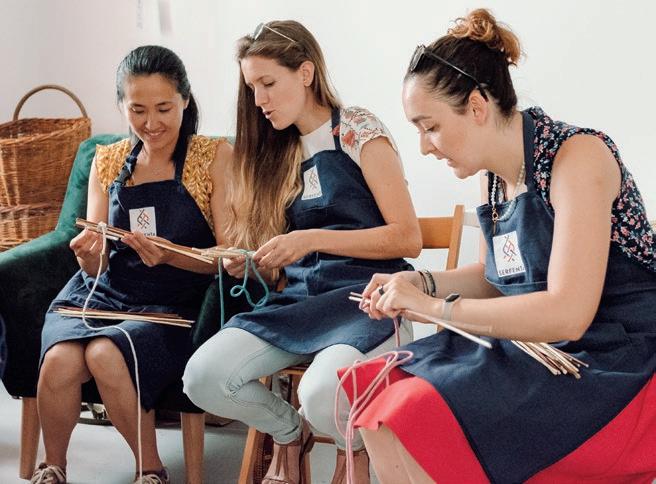
icated to connecting basketry masters with young students were undertaken. Until now, 510 workshops for more than 3500 participants have taken place. Also notable is the business training for basket makers and young artisans that they provide, wherein these artisans are taught how to sell their products in the modern world.
“This initiative focuses on building awareness and understanding of the value of intangible heritage in a world overwhelmed with the mass production of goods produced far away and with low-quality materials. With a strong basis in research, it offers a replicable strategy for other crafts in other contexts at European scale”, the Awards’ Jury emphasised.
“Serfenta Association’s success is testament the strength of its women-led team. They act as international ambassadors for the craft of basketry, having nurtured many fruitful connections and gaining strong support from many countries. Their achievement is remarkable as they are fully self-funded and self-sustaining. This serves as an excellent example for the continuation of traditional skills in other fields,” the Jury commented.
This model was created over 15 years, with the craft of basketry at its core. In cooperation with craftsmen, designers, and people of every age and all backgrounds, the Serfenta team tested new ways to successfully transmit this heritage.

Contact: Paulina Adamska, Serfenta | biuro@serfenta.pl | www.serfenta.pl
White carpentry (“La carpintería de lo blanco”) is a technique that from the 13th century to the 18th century made possible the construction of the roof trusses and wooden coffered ceilings that are present in thousands of religious and civic buildings in Spain. The “Carpintería de lo Blanco” School in Narros del Castillo was created to teach this lost trade to the next generations of carpenters, architects, restorers and other professionals related to the conservation of heritage, ensuring its transmission to the next generation.
The White Carpentry School is supported by the City Council of Narros del Castillo with the use of their premises and other in-kind support.
The loss of expertise in the intangible heritage of “carpintería de lo blanco” posed a great challenge for restoration and new construction projects which would remain faithful to the traditional rules of the trade. Founded in 2014, the school in Narros del Castillo aims to bridge this gap in expertise, being the only training centre in the world dedicated exclusively to teaching white carpentry.
Each year, four training courses take place, with 20 students enrolling in each course. The training is mostly free-of-charge with a small contribution requested from students helping to cover the costs of the materials necessary for each course, and for the creation of the didactic models that are the objects of study.
The school provides a programme of theoretical and practical content that encompasses the techniques historically used in white carpentry, from the point of view of design, layout and execution, implemented to allow the students to achieve mastery in the trade.
Some of the students have gone on to work on the restoration of Spanish-Islamic roof trusses, while others have incorporated structural and decorative aspects of Mudejar carpentry into their work. As a result of the “Carpintería de lo Blanco” School’s activities, several university teachers have added white carpentry to their training programmes, which until recently had been missing from formal study programmes.
The school makes great efforts to also raise awareness of the craft on a wider scale. To this end, the initiators have travelled to

many towns that have exceptional examples of white carpentry, to share the history of the trade and the carpenters who built them, and to offer training when requested.
“The White Carpentry School in Narros del Castillo is a bottom-up initiative created and driven by skilled craftspeople. By offering handson training, the school supports the ongoing understanding of this important carpentry technique and helps to preserve a disappearing craft which is relevant to many parts of Europe and beyond. A part of the traditional carpentry technique works with small section sizes, leading to a very economical use of timber, demonstrating the sustainable use of natural materials in heritage crafts”, the Awards’ Jury emphasised.
“They have achieved truly admirable results with a modest budget. Located in a small village, they have been able to stimulate local activism in the heritage field and have created job possibilities in the region”, the Jury said.
Founded in 2014, this is the only training centre in the world dedicated exclusively to teaching white carpentry, a type of decorative carpentry that is present in thousands of buildings in Spain.
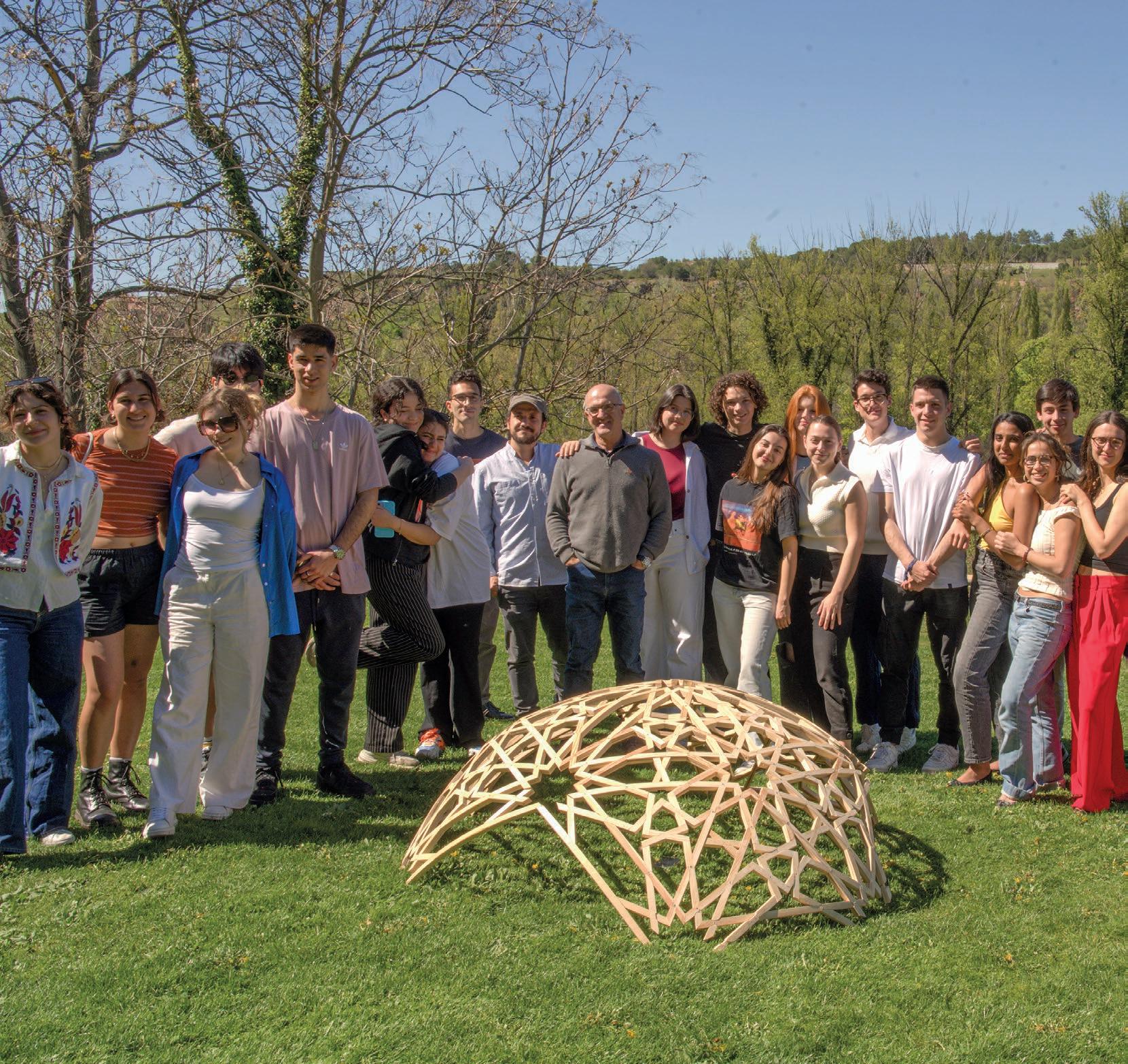
The Square Kilometre, a project coordinated and funded by STAM Ghent City Museum and the Ghent Heritage Cell , represents a visionary undertaking that not only empowers communities to reclaim their heritage but also enriches our understanding of urban history and diversity. For the past five years, a ‘historian in residence’ has been travelling the most diverse parts of Ghent. Per ‘square kilometre’, she has invited locals to bring forth ‘hidden histories’.
As a medium-sized European city, the historic city of Ghent is superdiverse, international and rapidly changing in every aspect. Often referred to as a ‘pocket-sized metropolis’, with its 260,000 inhabitants, it boasts over 160 nationalities.
The ‘historian in residence’ took up residence in five specifically designated square kilometres, corresponding to the squares depicted in a massive aerial image showcased within the museum. These areas are prime spots of urban renewal today, yet their history remains largely unexplored and overlooked in the dominant narratives in museums and archives.
Starting by simply walking around in the lived environment, local residents acted as leaders of participatory action research. These residents, affectionately referred to as ’rememberers’, represent diverse backgrounds in terms of gender, age, education, and their connection to the neighbourhood. However, they all share a profound bond with both the past and the future of their continually evolving working-class neighbourhoods, which are grappling with gentrification and urban transformation.
Through shared authority over their contemporary surroundings, these dedicated rememberers collaboratively decide, research, present, and engage in ‘hidden histories’ on topics such as religious diversity, resistance, and entrepreneurship.
Each residency culminates in an exhibition within the museum and numerous heritage guides where the narration is shaped by the rememberers themselves. This has resulted in an extensive calendar of activities.
This approach facilitates the emergence of new, personal insights into Ghent’s urban fabric. Furthermore, it empowers citizens
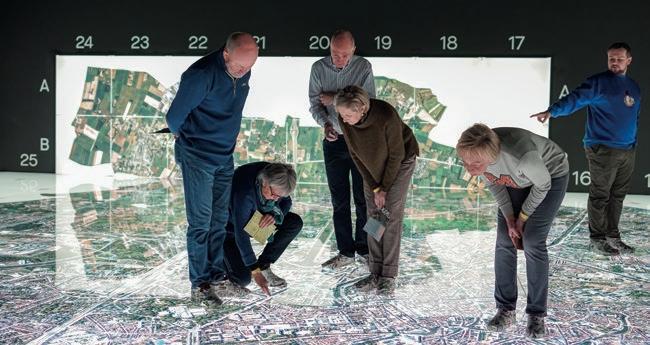
to act as agents of change, fosters a sense of belonging, promotes mutual understanding, transcends the confines of urban contexts, and integrates a global perspective.
Through these public history-projects, The Square Kilometre has not only been able to make ‘unheard voices’ heard, but also started up negotiations with cultural heritage peers about democratising their practices. As the project revolves around ownership and recognition, it has proved to be an accelerator of civic participation, emancipation and neighbourhood engagement.
“The great strength of The Square Kilometre project is its deep and meaningful engagement with the community, positioning local residents, in a larger city, as key actors in the heritage process. This inspiring initiative has great transferability and is highly replicable to other urban environments. Using an innovative methodology, it is a model for the democratisation of heritage and emerging European stories”, the Awards’ Jury commended.
“In validating everyone’s heritage, The Square Kilometre project empowers community members and fosters belonging. Through storytelling and the recording of personal narratives, it ensures that all voices are heard and is a true reflection of European identity, the diversity of which is essential. As a museum-led initiative, it is a commendable example of a cultural institution working with and for its community”, the Jury added.
For the past five years, a ‘historian in residence’ has been visiting the most diverse parts of Ghent, inviting locals to bring forth ‘hidden histories’. This results in exhibitions and heritage guides where the narration is shaped by the locals.

The anti-fascist “Monument to the Victory of the People of Slavonia” in Kamenska, Croatia, a thirty-metre high stainless-steel sculpture created by Vojin Bakić in 1968, stood as Europe’s largest abstract sculpture. It is a testament to Bakić’s avant-garde artistic vision. The sculpture was allegedly destroyed by the Armed Forces of Croatia in 1992, during the 1990s’ wars in former Yugoslavia. Meteorological data refutes earlier claims that the monument fell due to strong wind. This innovative project resurrected the monument through Augmented Reality (AR). A temporary installation at the original site of the sculpture was projected on a colossal LED screen, based on the project concept by Milorad Pupovac (SNV), work by artist Sandro Đukić, and curated by Davorka Perić. The installation brought the monument back to life, offering a remembrance of its original glory. Sound art by sound artist Marko Paunović accompanied this project. Additionally, a permanent information panel with QR code, facilitated by AR, ensures the enduring memory and virtual presence of this outstanding monument.
The inaugural event for the installation brought together more than 400 participants, among them people from the surrounding villages and members of the Association of Anti-fascists of Croatia, as well as cultural professionals working with modernist art and socialist heritage; peace activists, civil society representatives, representatives of the Serbian national minority in Croatia, and the general public. The participants could also visit other memorial sites in the vicinity of the destroyed monument created by Vojin Bakić.
The AR installation took place after an exhibition documenting the original monument and its virtual resurrection. The exhibition, curated by Davorka Perić, was open to the public for two weeks at the Prosvjeta gallery in Zagreb, and was followed by a symposium which was organised by Lana Lovrenčić. Through a series of lectures and a round table event, speakers addressed various topics related to artistic approaches to commemoration, protection and archiving of socialist heritage in former Yugoslavia.
The Silence that Tore Down the Monument project challenges dangerous forms of revisionism of history and advocates for the

positive embrace and safeguarding of Europe’s anti-fascist legacy. It underscores the need to invest necessary efforts, at all levels of governance, from local to European, in preserving the authenticity of collective remembrance through accurate history teaching, as well as about Europe’s most recent past.
“This innovative use of AR technology to resurrect a destroyed monument is a pioneering approach in the field of heritage conservation. While being specific to its own circumstances, it serves as an important model for other, similar contexts. The Silence that Tore Down the Monument project also opens a positive dialogue and creates space for discussions on dissonant, and often forgotten heritage with the related communities at its core. The project respected the artistic vision of the monument’s sculptor, and undertook the process in a sensitive way. Time was taken to tell the story of how they created the model, and why they did it, allowing people to follow in the journey, therefore ensuring a transparent process with due citizens’ engagement”, the Awards’ Jury said.
The anti-fascist “Monument to the Victory of the People of Slavonia” in Kamenska was destroyed during the 1990s’ wars in former Yugoslavia. This project resurrected the monument through public dialogue and Augmented Reality technology.

Community halls are an essential part of Finnish heritage. They have been built, maintained and used for nearly 150 years, parallel to the development of modern civil society. The halls are open to all and serve as the cornerstones of communities, offering premises for hobbies, meetings and festivities and are looked after with love and care by volunteers. This project is a model where state subsidies for sustainable repairs and renovations of the community halls are allocated to local associations via an NGO, the Finnish Local Heritage Federation. The model is innovative because of the strong role of citizens’ engagement at many levels in preserving this unique heritage of local communities.
Community halls are a culturally, socially, architecturally and historically invaluable group of buildings in Finland. There are around 2,500 halls in the country, almost double the amount of churches in Finland. These buildings serve as central points in their communities and are open to everyone for use at a low or no cost. Half of the halls are located in remote villages in areas where there are no other places suitable for civic activities. They are also used for public functions, including as polling stations, and leased for family events. In many municipalities, the halls are considered so vital for the community that they have been exempted from property tax.
The Finnish Local Heritage Federation has allocated government grants and provided consultancy in the sustainable repair and conservation of these buildings for decades. The federation works in close cooperation with the National Advisory Board of the Community Halls, which is the steering committee of the state subsidies in the project “Preserving the Community Halls for Local Civil Society Activities”. The committee consists of representatives of NGOs whose member associations own these buildings, such as youth associations, voluntary fire brigades, local heritage associations, and associations for farmers, women, workers and other groups.
The oldest community halls originate from the 19th century. Many of the most impressive buildings have been built by volunteers, and they are maintained today on the same basis. The grants help associations to keep and maintain their much-loved buildings.
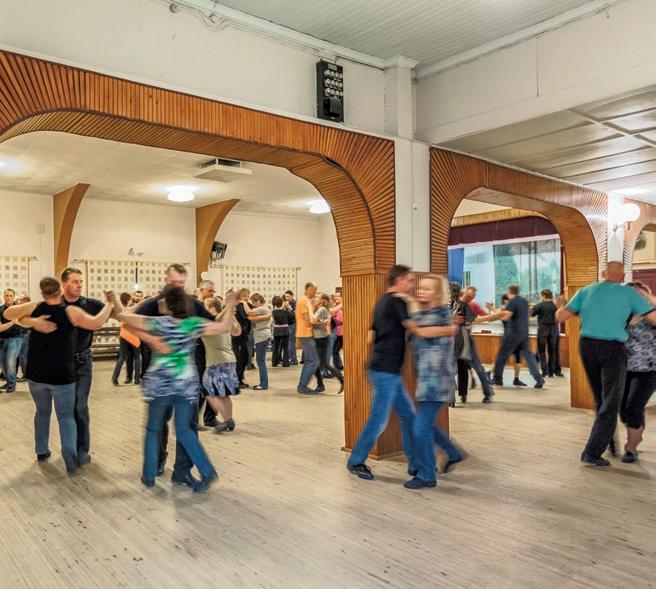
Good renovation planning and the use of sustainable methods and materials are the prerequisites for receipt of this subsidy, thus ensuring best practices in any maintenance activities.
“The successful collaboration between civil society and the public sector in the project Preserving the Community Halls for Local Civil Society Activities is commendable and is noteworthy for its transferability to other places in Europe. This robust interaction and ongoing commitment, by both local communities and the authorities, as well as the scale of the project, in terms of its wide reach and long duration, is truly impressive”, the Awards’ Jury said.
“The government grant scheme demonstrates the great importance of local heritage sites to local communities. Its focus on local heritage contributes to the creation of a strong sense of place and, therefore, the collective well-being of the people for whom these places are centres for community life”, the Jury commented.
This project is a model where state subsidies for sustainable repairs and renovations of community halls are allocated to local associations via an NGO. The model is innovative because of the strong role of citizens’ engagement at many levels.
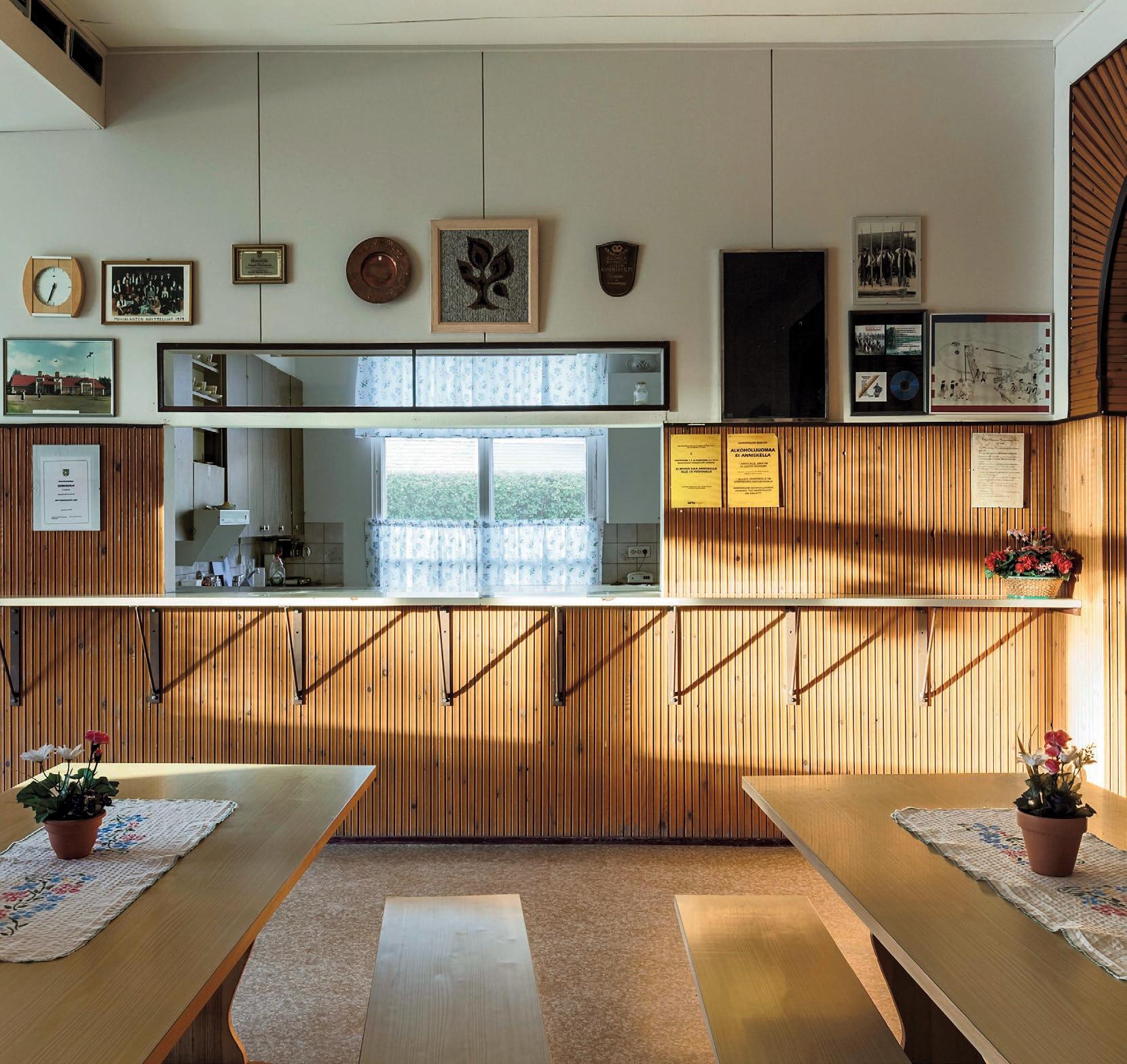
In the French region of Alsace, there are over a hundred remaining castle ruins on the Alsatian side of the Vosges mountains. Most of these ruins are in the open countryside, and all but four are freely accessible. Many are maintained by volunteer associations which were created in the last 20 years. The aim of the association Fortified Castles of Alsace (Châteaux Forts d’Alsace), created in 2013, is to underline the importance of this remarkable heritage to the public, to elected representatives, the authorities and the general public, through a range of different initiatives.
By the mid-18th century, most of Alsace’s fortified castles had been abandoned and left in ruins. Today, there are five that are regularly maintained such as the Haut-Koenigsbourg, which attracts approximately 500,000 visitors a year, and is operated at commercial level. The other castles, however, are left mostly in poor conditions. For this reason, there has been a movement among local communities to reclaim this heritage, to preserve the castles and ensure their accessibility to the public through the establishment of volunteer organisations.
These volunteers have achieved a huge amount of success with very few resources and limited public support. For more extensive restoration works, such as the consolidation of ruins, the organisations are almost entirely reliant on public funding.
In 2013, after a period of public budget cutbacks, the Fortified Castles of Alsace was created to support these volunteer-based organisations. The association sought to demonstrate that the castles were valuable to the region, not just from a cultural point of view, but also for the economy and society.
The projects undertaken by the association have included the creation of a website presenting their history and events for diverse audiences. A major achievement was the creation of the Alsace Fortified Castles’ Trail, which spans 450km, 26 stages and passes 80 castles. The Alsace Castles Day takes place annually on 1 May and enables organisations to organise events and visits for the public. Also notable is the involvement of historians in the production of resources for schools.
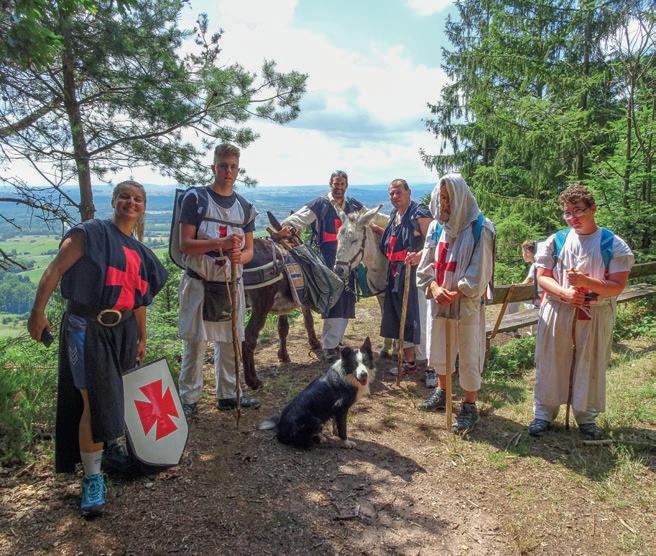
These activities have raised the profile of the region as a whole, and helped motivate the interest of local authorities in continuing their support for the maintenance of the castles. This includes the “Rhine Castles” INTERREG 2023-2025 project, which launched in October 2022 and brings together 37 partners from France, Germany and Switzerland to research and communicate about the castles on a cross-border level.
“The community-driven approach of the Fortified Castles of Alsace not only ensures sustainability and local relevance but also fosters inclusivity, a strong sense of ownership and pride among the local community, including young and non-traditional audiences”, the Awards’ Jury said.
“The initiative is very successful in the promotion of regional identity, as well as in the engagement of the local community in the care for their heritage. Together with the integration of tourism and the visibility they have succeeded in raising, the project is very transferable also at European level”, the Jury commented.
There are over a hundred castle ruins on the Alsace side of the Vosges mountains. The Fortified Castles of Alsace association underlines the importance of this remarkable heritage, through a range of different initiatives.

Over three years, international volunteers worked with the local community to restore the Tsiskarauli Tower, a remote monument which was at risk of collapse. The project has brought much-needed attention to the isolated mountain community of Khevsureti, and had significant impact at both local and international levels in raising awareness of the value of Georgian heritage.
The International National Trusts Organisation (INTO) was the lead partner, working in close collaboration with the National Trust of Georgia and REMPART (France). The project was supported by a grant from ALIPH – the International alliance for the protection of heritage in conflict areas.
The mediaeval watchtower in the Caucasus Mountains witnessed wars, occupations and migrations over the centuries, and was severely damaged in 2001 by a Russian missile during the Second Chechen war. 46 Georgian and international citizens worked alongside technical experts and traditional craftspeople to restore the tower, which is now a model for the rehabilitation of Georgian defensive architecture.
As well as learning new skills in stonemasonry and path building, participants experienced one another’s intangible heritage, thus showing the peacebuilding capacity of collective restoration. The work has also raised the profile of volunteering in Georgia and provided sought-after opportunities for young people to engage with their heritage, building local pride and identity.
Alongside the tower’s stabilisation, a large focus of this project was knowledge sharing and capacity building within the National Trust of Georgia. Over two secondments in France and the UK, the staff of the National Trust of Georgia learnt from English and French models of volunteerism, and about the stewardship of remote heritage sites.
The project faced many challenges, including the COVID-19 pandemic, Russia’s invasion of Ukraine and a major landslide. Against all odds, the Tsiskarauli Tower carries a new, positive layer of history, marked by international collaboration.
The site now welcomes tourists who seek to understand this region’s multilayered history via a new walking route. They can

read about the tower’s history on interpretative panels, see the remains of the Russian missile, learn of its restoration, and explore the surrounding villages.
“The Citizens’ Rehabilitation of the Tsiskarauli Tower embodies excellence in heritage conservation through a holistic approach, integrating the restoration of built heritage, community engagement, international collaboration, and capacity-building, following the severe damage to the monument caused by a Russian missile fired during the Second Chechen war. Engaging in a broader network and consortium, the project provided a platform for the exchange of knowledge and culture”, the Awards’ Jury commented.
“The use of traditional materials and techniques has enhanced the authenticity of the work, while community engagement, involving locals, international volunteers, and the diaspora has created a sense of stewardship. The project has served as a catalyst for international cultural relations, peace, and trust building, demonstrating the power of heritage-led collaboration in overcoming conflict and rehabilitating local communities”, the Jury concluded.
Over three years, 46 Georgian and international citizens worked alongside technical experts and traditional craftspeople to restore the Tsiskarauli Tower, which was at risk of collapse.
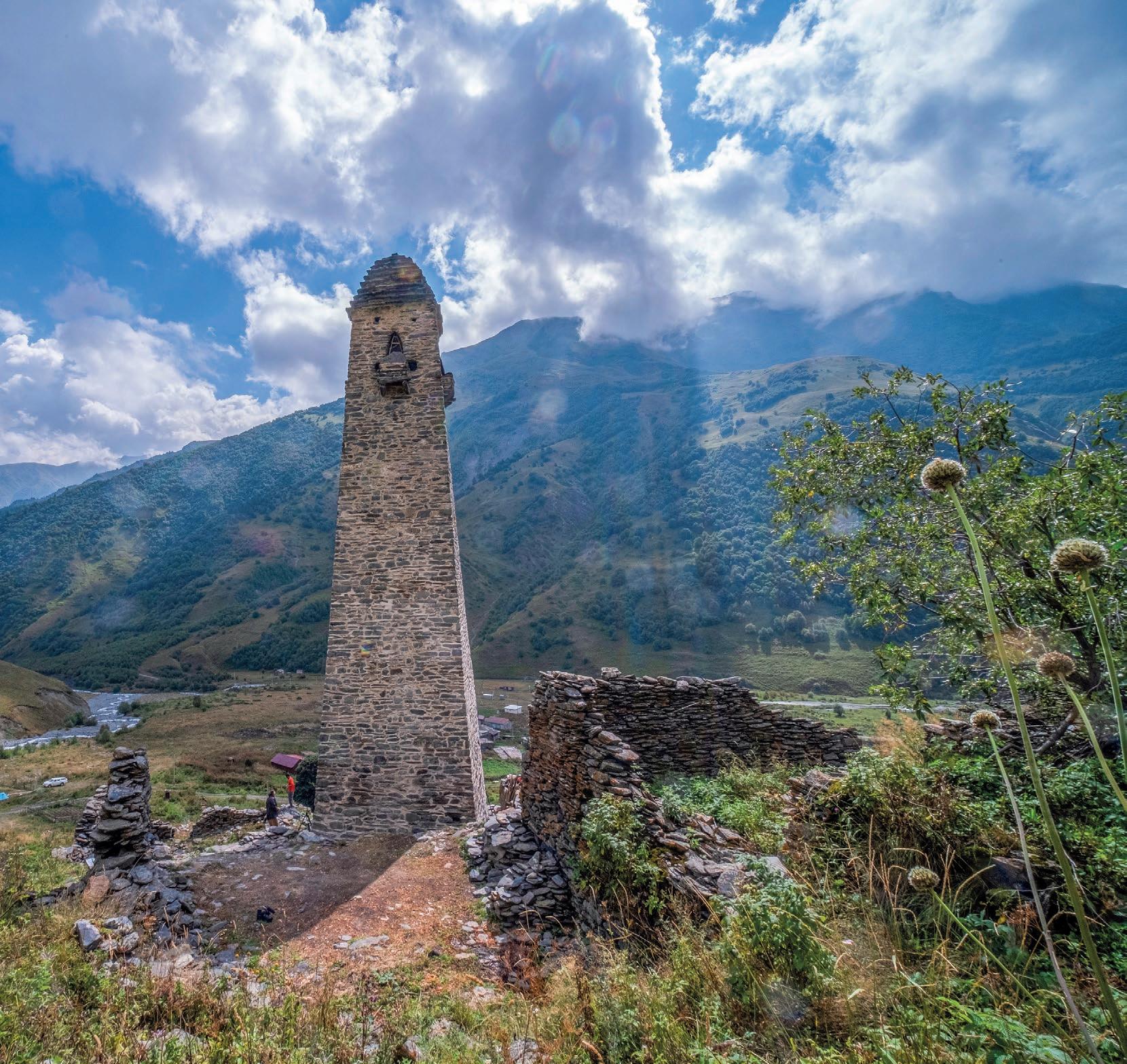
The International Festival of Classical Theatre for Youth, hosted in Palazzolo Acreide in Syracuse, Italy, is a renowned theatre festival organised by INDA, the National Institute of Ancient Drama (Istituto Nazionale del Dramma Antico), and dedicated to the future of classical theatre. Since 1991, young talents from around the world have converged at the Greek Theatre of Akrai to reinterpret classical Greek and Roman texts. The festival celebrates Europe’s rich classical heritage while boldly forging ahead into the future, cultivating a deep appreciation for classical theatre, and fostering the next generation of artists and thinkers.
This annual event fosters creativity, participation, and cultural exchange. In 2023, 2,417 students from Italy and countries around the world presented 92 remarkable shows, continuing a tradition that has involved over 50,000 young students over the years. With its rich programme of performances, workshops, and cultural exchange, the International Festival of Classical Theatre for Youth celebrates classical culture while nurturing the next generation of theatre enthusiasts.
The festival’s influence extends to the local community, region, and nation. Serving as a cultural catalyst, it attracts an audience from across Italy and beyond. The festival has drawn large crowds to the marginalised mountain communities which are often omitted from tourism maps, thus boosting local businesses and leaving a lasting impact beyond the festival.
Notably, the festival’s dedication to educational outreach and inclusivity is exemplary. It stimulates societal discourse on significant issues, raising awareness among students about contemporary matters, and fosters social inclusion as students from diverse backgrounds collaborate openly. Offering workshops with acclaimed teachers, it offers a learning experience beyond the stage. Students, whether from high schools or academies, collaborate in an open and accessible environment that encourages diverse perspectives and creativity.
The International Festival of Classical Theatre for Youth is one of the many activities of INDA which was founded 110 years ago by a group of Sicilian patrons. Since then, it has been producing
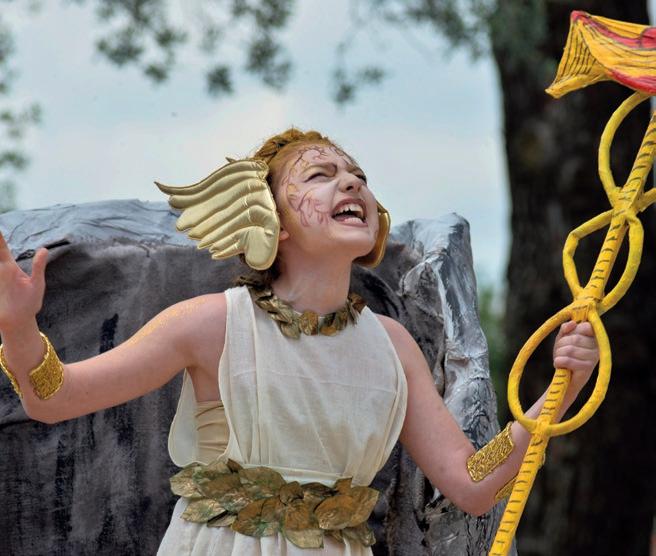
a season of classical performances every year in the Greek Theatre of Syracuse to promote classical culture and raise awareness of ancient theatre texts. INDA secures funding from various sources, including government grants, corporate sponsorships, and individual donations, ensuring financial stability.
“The International Festival of Classical Theatre for Youth significantly contributes to the preservation and revitalisation of classical theatre, an element of Europe’s intangible cultural heritage. The festival has demonstrated great endurance over a long period of time, thanks also to the large-scale involvement of a professional community. It stands out for its innovative approach to engaging youth in cultural heritage, and has had great success in fostering a deeper appreciation of classical texts among a new generation. Looking to Greek and Roman theatre as a source of inspiration, the festival shows how this heritage is linked to the permanent values of European society and life”, the Awards’ Jury said.
Since 1991, over 50,000 young students from around the world have converged at the Greek Theatre of Akrai to reinterpret classical Greek and Roman texts. The festival’s dedication to educational outreach and inclusivity is exemplary.

Contact: Marina Valensise, INDA | Consigliere.delegato@indafondazione.org | www.indafondazione.org
The Foundation for the Conservation of the Historic Country Estate Ockenburgh (SHBO) represents over 150 dedicated local volunteers whose exemplary efforts revived this significant monument, located in the city of The Hague in the Netherlands. Together, they invested 80,000 hours restoring the estate’s grounds, surrounding parkland, and the villa’s interior. A diverse team of experts, including landscape architects, interior designers, and social educators, volunteered their expertise. Local businesses provided materials and labour, while community members donated furniture, decorations, and their time. The initiator, Petra Brekelmans, inspired many with her cheerful and infectious enthusiasm.
The Ockenburgh Estate was founded in 1654 by Jacob Westerbaen, a knighted poet, doctor, and preacher, a lover of the arts and an energetic gardener. The estate’s location in the southwest of The Hague borders Westland, an area renowned for its greenhouses and market gardening, and said to be an outgrowth of Westerbaen’s vegetable gardens. Over the centuries, Ockenburgh underwent numerous transformations, including from 1971 as a youth hostel and community park. Neglected for two decades after the hostel’s closure in 1996, Villa Ockenburgh accrued a €3 million backlog in maintenance costs.
In October 2014, SHBO established a restoration plan with The Hague authorities: in all, a decade-long effort transformed Ockenburgh into a safe and welcoming community space. The monumental Villa Ockenburgh now houses a restaurant serving local cuisine, including herbs from its garden, a self-sustaining café, and the Villa Bijzonder Foundation, a centre for people with disabilities, teaching them skills to help them find quality jobs in the future.
The project was made possible thanks to the collaboration between SHBO volunteers, schools, businesses, charities, The Hague officials, the Province of South Holland, and the Heritage Table of Country Estates of South Holland (Erfgoedtafel Landgoederenzone). Volunteers still play a big role at Ockenburgh. They regularly maintain the grounds, and fruit and vegetable gardens, carry out maintenance of the interior and exterior of the villa, and organise

many cultural events and community gatherings throughout the year. Taking part in volunteering activities at the villa is so in demand that SHBO maintains a waiting list for people wishing to take part.
Also working on a voluntary basis and under Karin Zwinkels’ leadership, SHBO’s Board oversees Ockenburgh’s administration, builds and maintains relationships with partners, and works to make the estate more sustainable and future-proof.
“The Foundation for the Conservation of the Historical Estate Ockenburgh is exemplary in its excellent community engagement, extensive volunteer involvement, and partnership with local institutions in the restoration and revival of the estate. The community’s commitment and innovative fundraising strategies are commendable. The initiative, which includes the high-quality integration of the NATURA 2000 landscape and historical buildings, answers to the principles of the New European Bauhaus. A truly bottom-up initiative, it has supported social cohesion and created a sense of belonging with close consideration of the contemporary context”, the Awards’ Jury said.
This foundation represents over 150 local volunteers who spent a decade working to renovate the Ockenburgh Estate, founded in The Hague in 1654. Volunteers still play a big role at Ockenburgh, maintaining the villa and its gardens.
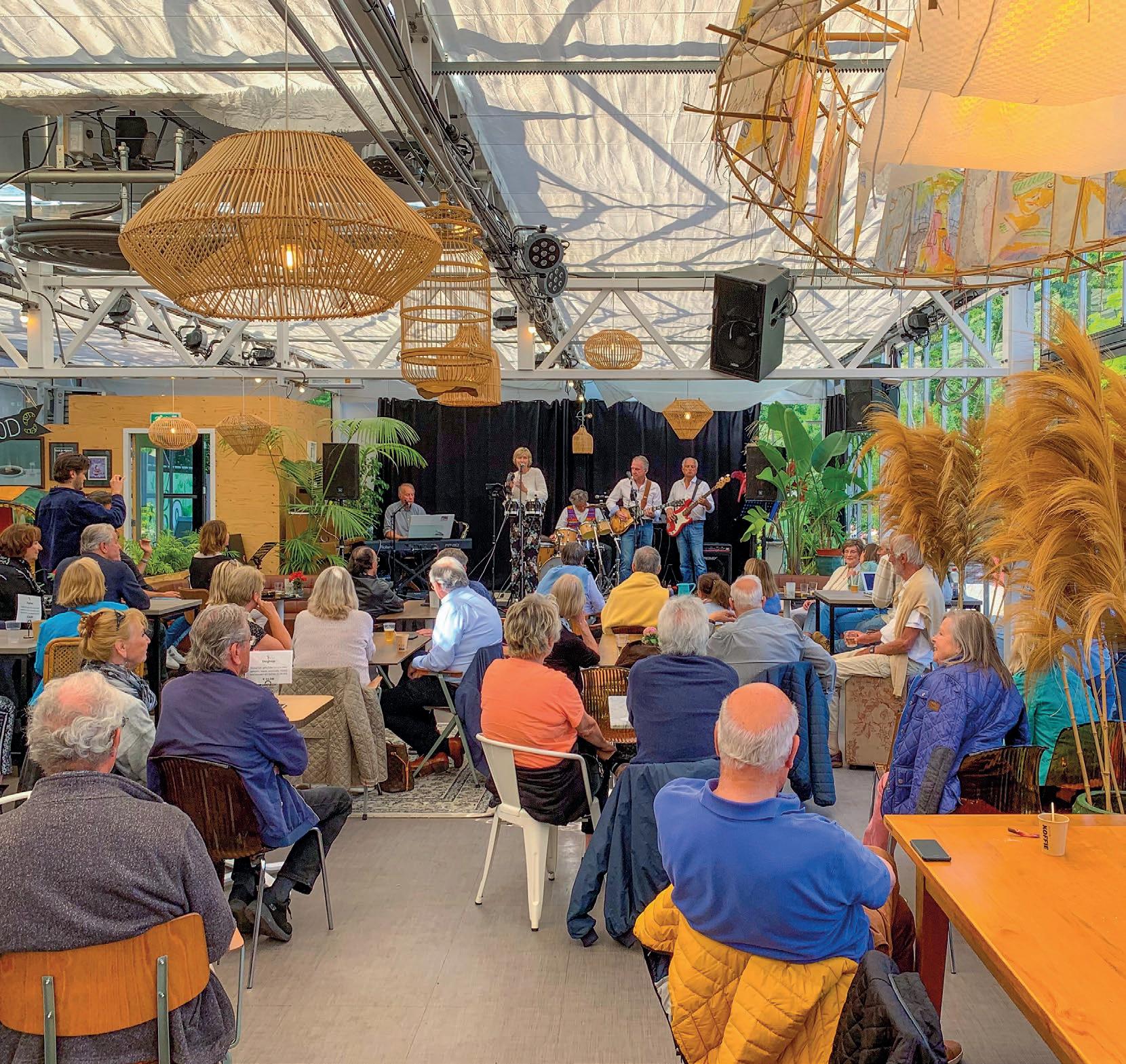
The Society of Friends of Dubrovnik Antiquities is a non-profit civil society association that has raised awareness of the importance of the cultural heritage of the World Heritage City of Dubrovnik since 1952.
More than seventy years ago, the Society of Friends of Dubrovnik was established with the motto: “From the monuments for the monuments”. Ahead of its time, this working principle can still be considered innovative today, and continues to serve as the basis for the Society’s contemporary activities.
In the early 1950s, Dubrovnik’s heritage was poorly protected and in a state of disrepair. Lukša Beritić (1889-1969), a naval engineer and art enthusiast, took action to turn the tide on this deterioration and to harness the power of this heritage for the future of the city and its inhabitants. Beritić and the fledgling association soon earned the favour of the city’s authorities and were entrusted with maintenance and management of part of the city’s most iconic monuments: the city walls. The Society dedicated its first years of activity to the organisation of tourist activities, with the funds collected being directly reinvested into the restoration of the city’s monuments, and the safeguard of important ancient artefacts.
Over the years, the association has undertaken many projects, including the restoration of the 15th-century Fort Revelin, the Church of the Rozario Fraternity, the city bridges as well as multiple interventions on the walls of Dubrovnik and the walls of nearby Ston, which was part of the Republic of Dubrovnik. The Society was closely involved with the inclusion of the Old City of Dubrovnik on the UNESCO World Heritage List in 1979, which helped to further ensure the safeguarding of the city’s heritage. These monumental works were driven by the passion of the Society’s members, who often worked on a voluntary basis.
The Society actively engages with the local community, in order to foster a sense of ownership and pride in the shared cultural heritage of the region and to understand its multiple values to society. Many public events have been organised, including lectures by eminent experts, and many books, video materials, and media articles that appeal to both professional and general audiences have been published.
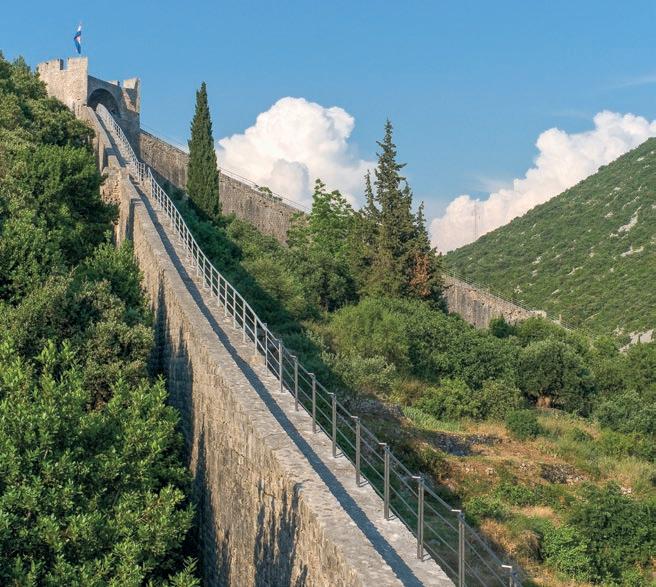
“The work of the Society of Friends of Dubrovnik Antiquities represents an exceptional civil society achievement that spans more than seven decades and several generations. Their tireless and competent commitment and unwavering, enduring resilience over this long period of time, is truly impressive especially given the many challenges that they – together with other citizens of Dubrovnik – have faced, both in times of war and peace”, the Awards’ Jury commented.
“This influential and impactful association created a community of like-minded people who work together for a common purpose of cultural heritage conservation and identity. Their European significance is demonstrated among others by the outstanding universal value of the unique World Heritage City of Dubrovnik, as well as by the important example they set in maintaining mutually beneficial relations with a wide range of actors with varying interests”, the Jury emphasised.
Since 1952, this civil society association has financed and completed research and conservation projects of Dubrovnik’s landmarks. It plays a vital role in ensuring the safeguarding and enhancement of this World Heritage City.

Over five decades, Else “Sprossa” Rønnevig spearheaded the rescue of old windows, halted the replacement of valuable historic windows, and established clearer regulations for protection, transforming Norway’s approach to cultural preservation. Through her work, she has actively involved local communities, fostering pride in their cultural heritage and ensuring knowledge transfer to future generations.
Else Rønnevig’s journey from a disparaged autodidact to a respected pioneer in the heritage field is a testament to her unwavering resilience. Rønnevig’s mission began in the 1970s when Norway was undergoing a transformation in its architectural landscape. The replacement of old windows with modern alternatives threatened the authenticity of historic houses, losing their distinct European influence. These new windows appeared as foreign elements, disrupting the harmony of old, beautiful homes. Rønnevig’s life work became a mission to rescue old windows, leading to her enduring nickname, “Sprossa”, in reference to the strip of wood that separates and holds panes of glass in a window. Rønnevig embraced this somewhat negative moniker, and it has now become synonymous with window restoration and building preservation.
Rønnevig championed the preservation of old windows through public education and the establishment of clear regulations. She single-handedly halted the rapid decay of traditional windows along the south coast of the country. Her work extended beyond windows, with initiatives like the reprinting of Norwegian wallpapers, and the revival of traditional wood-fired baking ovens.
She also played a pivotal role in creating Norwegian Cultural Heritage Days, a nationwide event that highlights the importance of cultural preservation. Rønnevig’s innovative methodology involves on-site training in restoration projects, inspiring individuals, both amateurs and professionals, to undertake restoration projects themselves. She has published 12 books on the subject, organised courses, and developed a methodology that has been adopted by volunteers and professionals across Norway.
Rønnevig has received numerous awards and recognitions for her dedication, including the King’s Medal for Meritorious Service

and other prestigious accolades. She has transcended the barriers of gender and education, proving that passion and determination can drive change in the field of cultural preservation.
Norway previously had a reserved attitude towards cultural heritage. Rønnevig’s transformative work has shifted this perspective and inspired individuals and communities to actively engage in cultural preservation. She empowers heritage professionals and the public alike, and her efforts in cultural heritage preservation continue to shape Norway’s heritage landscape.
“Else “Sprossa” Rønnevig is a true inspiration. She has overcome, and indeed defied, the constraints and barriers she faced, and is a great example of someone who has successfully followed a non-traditional path in a heritage career. Her success is owed in part to her positive personality, which helped mobilise and convince a wide range of people of the importance of windows in the restoration of buildings”, the Awards’ Jury emphasised.
“Her absolute commitment to authenticity has helped to change the paradigm of how historic windows are perceived by a wider public. Also commendable is her European outlook, for instance in helping bring Norway into the European Heritage Days programme”, the Jury added.
Over five decades, Else “Sprossa” Rønnevig spearheaded the rescue of old windows and established clearer regulations for their protection. She played a key role in transforming Norway’s approach to heritage conservation.

Piotr Gerber has dedicated his professional life to the protection of post-industrial heritage. In both Poland and abroad, he has played an influential role in raising public awareness and understanding of the importance of technical and technological development.
In 2007, Piotr Gerber founded the Foundation for the Preservation of Industrial Heritage, which researches the industrial history of Silesia, protects tangible industrial heritage, and educates on industrial development through heritage. Of Gerber’s most remarkable achievements is his purchase of seven industrial buildings in Silesia, Europe’s largest coal-mining region. Following purchase, the buildings underwent extensive conservation and were transformed into museums, thus securing their future and enriching the cultural lives of the surrounding communities at the same time. Gerber finances the purchase, conservation, and maintenance of these historic buildings largely on his own.
Piotr Gerber places particular emphasis on authenticity – preserving the original architectural fabric and using original machines to present the historical technological process. All of the facilities he has saved contain still functioning machines that are maintained by the former employees of these industrial plants. Gerber also ensures that these buildings continue to play an important role in local communities. For example, in 2022, the project “Technical Museums Support Ukraine” created a safe space in post-industrial buildings for Ukrainian refugees, who were displaced as a result of the war.
Gerber has also had a significant impact on improving legislation around industrial heritage and is the co-author of conservation guidelines for post-industrial heritage assets that are implemented by the Ministry of Culture and National Heritage in Poland. He also commits to transmitting his knowledge to the next generation by teaching at university level, and together with his team, organising specialist conferences and implementing educational programmes for children and young people in museums.
In 2020, Gerber, together with his Team, nominated the Szombierki Power Plant in Bytom to the 7 Most Endangered programme. This large Modernist building was included on the list of 7 Most

Endangered heritage sites in Europe for 2020, and resulted in an investor being found, who plans to adapt the building to new uses.
“The span of Piotr Gerber’s work is truly amazing. His unrivalled commitment to industrial heritage has helped to reveal its value to a wider public and had a lasting impact on policy surrounding this heritage. The scope of his work is very impressive, with many museums created over the course of his career,” the Awards’ Jury said.
“Piotr Gerber has demonstrated great dedication to preserving the authenticity of industrial heritage sites, and has helped to connect them to the history of the local communities. This is exemplified, for instance, by the employment of former factory workers. His efforts include cross-border cooperation with experts and his European impact is important, in that he highlights the significance of this heritage beyond Poland,” the Jury noted.
Piotr Gerber has dedicated his life to the protection of post-industrial heritage. In both Poland and abroad, he has played an influential role in raising public awareness and understanding of the importance of technological development.
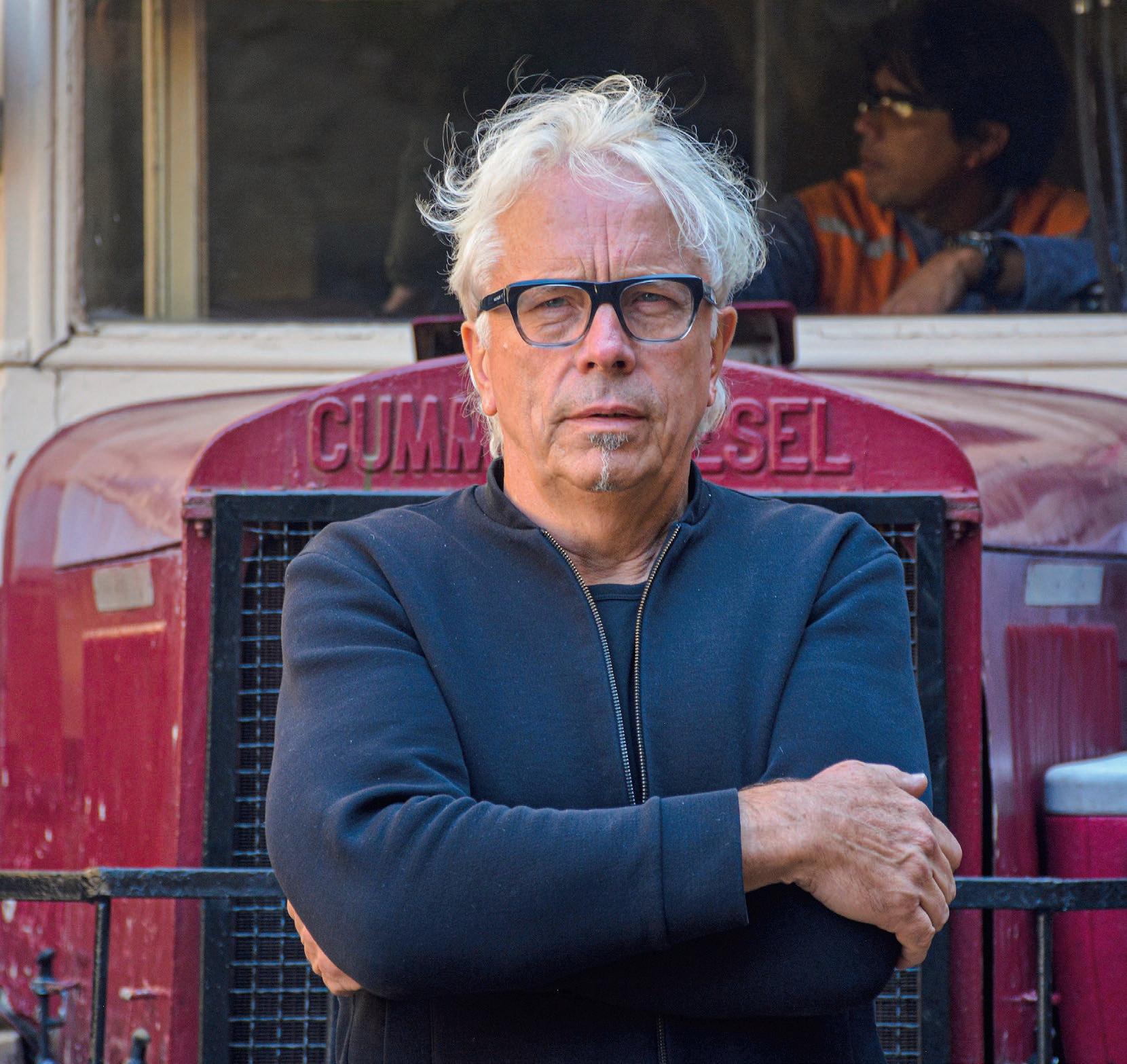
Marcus Binney has been a guiding force for raising public awareness of European cultural heritage for over fifty years. His wide-reaching influence and inspiring leadership have revolutionised the protection and conservation of heritage in the United Kingdom and abroad.
Fifty years ago, historic buildings in the UK were being demolished at the rate of one per day. In 1975, in response to this drastic loss, Binney co-founded SAVE Britain’s Heritage, a group of architectural historians, journalists and planners, who are now recognised as one of the most effective and influential heritage organisations in the UK. Through SAVE, Binney helped begin a movement of direct action and media campaigning that alerted the public to the scale of the loss of built heritage in the UK, challenged governments’ understanding of the feasibility of rescue and re-use, and, ultimately, would help save innumerable buildings.
Among Binney’s noteworthy achievements is his contribution to updating legislation around heritage through campaigns and landmark rulings. Most recently, Binney mounted a successful appeal against the demolition of the Marks & Spencer department store on Oxford Street in London. The case, the first to place heritage and embodied carbon at the heart of a public inquiry, could set a precedent that will be of huge assistance to others seeking to save heritage buildings.
SAVE was also the first organisation to campaign for the introduction of the Thirty-Year Rule, which now makes outstanding post-war buildings in England and Wales eligible for listing. Among the other gems that have been saved are Smithfield and Billingsgate markets.
Marcus Binney has also had success in Poland, Spain, Germany, Russia and Italy, motivating and encouraging local heritage conservationists across the continent. His exceptional skill in careful persuasion, as well as his ability to bring together actors from a wide range of fields, including politicians and local authorities, is outstanding.
Notably, his work with the Moscow Architecture Preservation Society on the joint report Moscow „Heritage at Crisis Point” had a massive impact. It was one of the major strands of campaigning
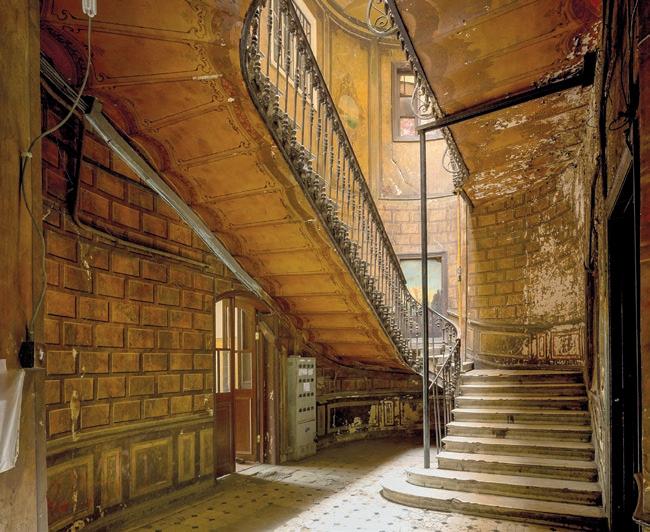
in Moscow that led to a sea change in attitudes to heritage in the post-Soviet era, and subsequently a huge reduction in demolitions.
In recognition of his services to heritage, Binney was appointed Officer of the Order of the British Empire (OBE) in 1983 and Commander of the Order of the British Empire (CBE) in 2006.
“Marcus Binney is a daring, courageous and fearless leader who has set the standard for heritage campaigning over the past 50 years. His activities and interests are in a diverse range of building types, truly spanning all across Europe. With a clear objective, he utilised the media very cleverly to change views on heritage and heritage reuse,” the Awards’ Jury said.
“Binney can be described as a pollinator, successfully convincing and bringing stakeholders together, and acting as a skilled moderator among various groups with sometimes conflicting interests. He is a legal innovator, helping to change legislation to limit damage and setting legal precedents, who serves as a powerful example for heritage campaigners across Europe,” the Jury underlined.
Marcus Binney has been a guiding force for raising public awareness of Europe’s cultural heritage for over 50 years. His wide-reaching influence and inspiring leadership have revolutionised the protection and conservation of heritage.

The winners of the European Heritage Awards / Europa Nostra Awards winners are chosen by a group of cultural heritage experts who meticulously assess each submission. The members of the Selection Committees and the Heritage Awards Jury generously contribute their time and expertise on a voluntary basis.
Coming from every part of Europe, these members collectively offer a vast reservoir of knowledge and skills. Their diverse backgrounds encompass archaeology, architecture, conservation, documentation, education, engineering, intangible heritage, linguistics, materials, museum curation, and more. This interdisciplinary approach ensures a comprehensive evaluation of all entries. We extend our heartfelt gratitude to all these experts for their unwavering commitment, valuable insights, and endless generosity.
Several European Heritage Youth Ambassadors have again acted as members of the Selection Committees for the 2024 edition of the Awards.
The European Heritage Youth Ambassador Programme, run by the European Students’ Association for Cultural Heritage (ESACH), Europa Nostra and the European Heritage Tribune offers a platform for young people from all over Europe and beyond to share their stories and experiences in the heritage field online (on social media, websites, or blogs etc.). Each Youth Ambassador also acts as a bridge between students and young professionals and European heritage institutions.

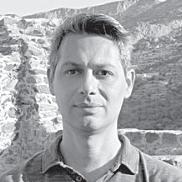










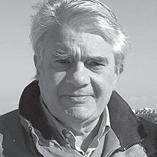



CONSERVATION & ADAPTIVE REUSE
Eugen Vaida RO Chair
Klimis Aslandis GR
Senada Demirović Habibija BA
Yonca Erkan TR
Maria Luisa Gil ES
Adam Klups UK/PL Youth Ambassador
Bobo Charlotte Krabbe DK
Dirk Michiel Purmer NL
Francesco Trovó IT
Tina Wik SE
Elena Dimitrova BG Chair
Angelos Kottas GR Youth Ambassador
Nicola Matthews IE
Emine Nurcan Yalman TR
Alex Torpiano MT
Georgios Toubekis DE





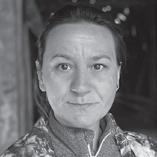
EDUCATION, TRAINING & SKILLS
Sara Robertson UK Chair
Brixhita Deda AL Youth Ambassador
Pâquerette Demotes-Mainard FR
Ola H Fjeldheim NO
Oliver Reisner DE/GE
Alexandra Stoica RO







CITIZENS’ ENGAGEMENT & AWARENESS-RAISING
Pavlos Chatzigrigoriou GR Chair
Flora Baquelaine ES
Árpád Boczen HU
Grace Emely NL/ID Youth Ambassador
Davida De Hond NL
Marius Mueller DE
Hakan Shearer Demir TR/US






HERITAGE CHAMPIONS
Petr Svoboda Chair
Ece Karakaş TR/SE Youth Ambassador
Sadi Petrela AL
Agni Petridou CY
Lesia Voroniuk UA
Marianne Ytterdal NO
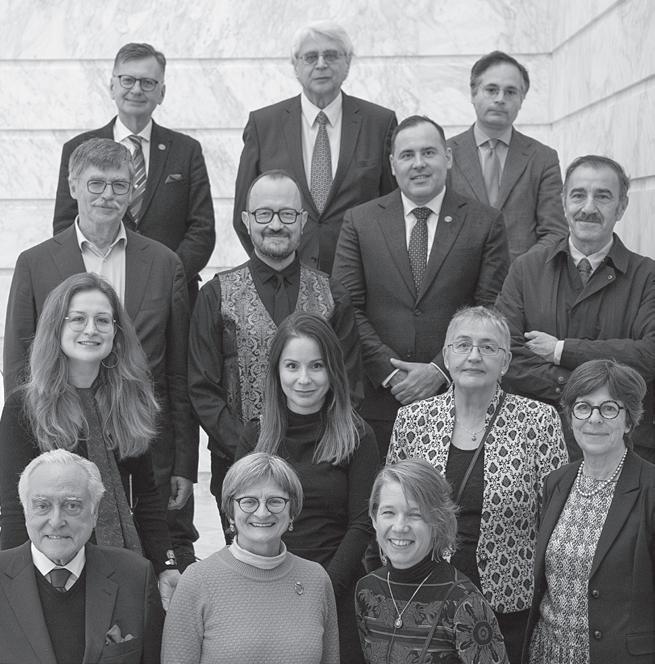
HERITAGE AWARDS JURY
Jacek Purchla PL Chair
Koen Van Balen BE
Pavlos Chatzigrigoriou GR
Elena Dimitrova BG
Antonio Lamas PT
Johanna Leissner DE
Sabine Nemec-Piquet CH
Charles Personnaz FR
Pedro Ponce de Leon ES
Sara Robertson UK
Jermina Stanojev RS
Petr Svoboda CZ
Eugen Vaida RO
Prior to being submitted to the Heritage Awards Jury for consideration, each entry that has been shortlisted to the European Heritage Awards / Europa Nostra Awards by the Selection Committees undergoes evaluation by heritage experts from across Europe.
These independent experts visit the sites and/or conduct interviews with the entrants, later sending their assessment report of the entry to the Heritage Awards Jury.
Their diverse expertise across multiple disciplines not only ensures the credibility and excellence of the awards program but also plays a crucial role in the decision-making process of the Jury.
We express our heartfelt gratitude to each of the local assessors for dedicating their time and expertise to the meticulous assessment of each shortlisted entry.
Assessor’s name Country
Lida Miraj Albania
Benoît Delaey Belgium
Rafaël Deroo Belgium
Goranka Horjan Croatia
Tomislav Augustinčić Croatia
Rikke Bjarnhof Denmark
Tuija Mikkonen Finland
Maria De Brasdefer France
Mathilde Allard France
Maka Dvalishvili Georgia
Achim Krekeler Germany
Kleopatra Theologidou Greece
Beatrice Kelly Ireland
Paul O’Brien Ireland
Alberto Winterle Italy
Andrea Cottini Italy
Antonella Mott Italy
Cristina Loglio Italy
Francesca Romana Liserre Italy
Gaianè Casnati Italy
Gianfranco Bonesso Italy
Pietro Petraroia Italy
Lilian Grootswagers-Theuns
The Netherlands
Tom Henkemans The Netherlands
Marit Jacobs The Netherlands
Erik Schultz Norway
Agnieszka Gryglewska Poland
Karolina Sajniak-Drzyzga Poland
Katarzyna Jagodzińska Poland
José Pedro Caiado Portugal
Maria Calado Portugal
Daniel Tellman Romania
Teodor Frolu Romania
Tudor Pavelescu Romania
Andrej Hrausky Slovenia
Alejo Hernández Lavado Spain
Igor Cacho Spain
Jasna Popović Spain
Laina González Cores Spain
Lourdes Ballesteros Spain
Luis Cueto Spain
Manuel Gracia Spain
Miguel San Nicolás Spain
Ege Yildirim Turkey
Fernaz Öncel Turkey
Sıdıka Bebekoğlu Turkey
Natalia Moussienko Ukraine
Adam Tyson
United Kingdom
Howard Worth United Kingdom
Peregrine Bryant United Kingdom
Sophie Andreae
Zenzie Tinker
United Kingdom
United Kingdom
Pages PHOTO CREDITS (left to right)
2–3
© La Rochelle Université, 2024 | © Stijn Bollaert | Yorgos Kyvernitis
© National Trust Images/James Dobson 2023
Page 5 © European Commission, 2024 | Portrait supplied by Cecilia Bartoli
© David Frutos, 2023
8–9 © Stijn Bollaert
10–11 Photos courtesy of Volker Kielstein
12–13 © Marek Locher, 2024 | © Michal Koczy, City of Rybnik, 2024
14–15 © Adrian Arsu | © Mihai Eminescu Trust Foundation
16–17 © Kiss Gabor | © Maksay Ádám, 2024
18–19 © David Frutos, 2023 | © Juan Miguel Galera, 2023
20–21 © National Trust Images/James Dobson 2023
© National Trust Images/Nick Guttridge
22–23 © Daniel Hopkinson
24–25 © Donald Insall Associates | © Thomas Erskine, 2019
26–27 © La Rochelle Université, 2024
28–29 © Haykuhi Karapetyan, 2024
30–31 © Yorgos Kyvernitis
32–33 © The Heritage Council
34–35 Courtesy of Serfenta Association
36–37 © Inés Santamarina, 2024
38 –39 © Martin Corlazzoli | © Phile Deprez
40–41 © Viktor Zahtila | © Aleksandar Blažina
42–43 © Tuomas Uusheimo
44–45 Courtesy of Association Châteaux forts d’Alsace
46–47 © Giorgi Pridonishvili, 2023
48–49 PH. GIANNI LUIGI CARNERA/AFI-SR
50–51 Courtesy of The Foundation for Conservation of the Historic Country Estate Ockenburgh
52–53 Courtesy of the DPDS archive
54–55 © Jan Larsen
56–57 © Sławomir Cymorek | © Grażyna Krumeich
58–59 © Save Europe’s Heritage/Richard Davies | © Natalie Mayer
61–62 Portraits provided by Selection Committee Members Heritage Awards Jury photo: Stefan Gloede
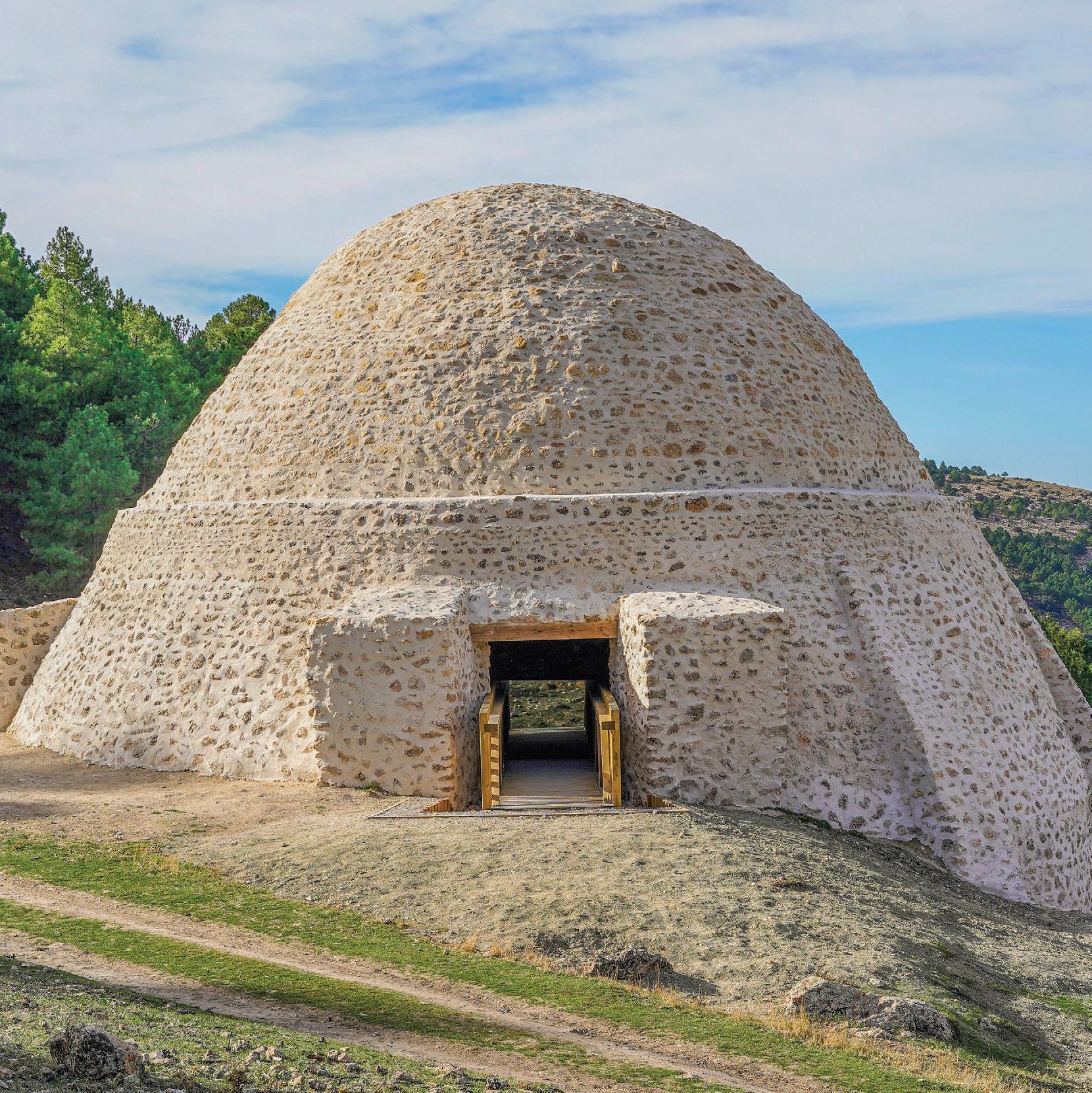
europanostra.org
europeanheritageawards.eu
ec.europa.eu/programmes/creative-europe